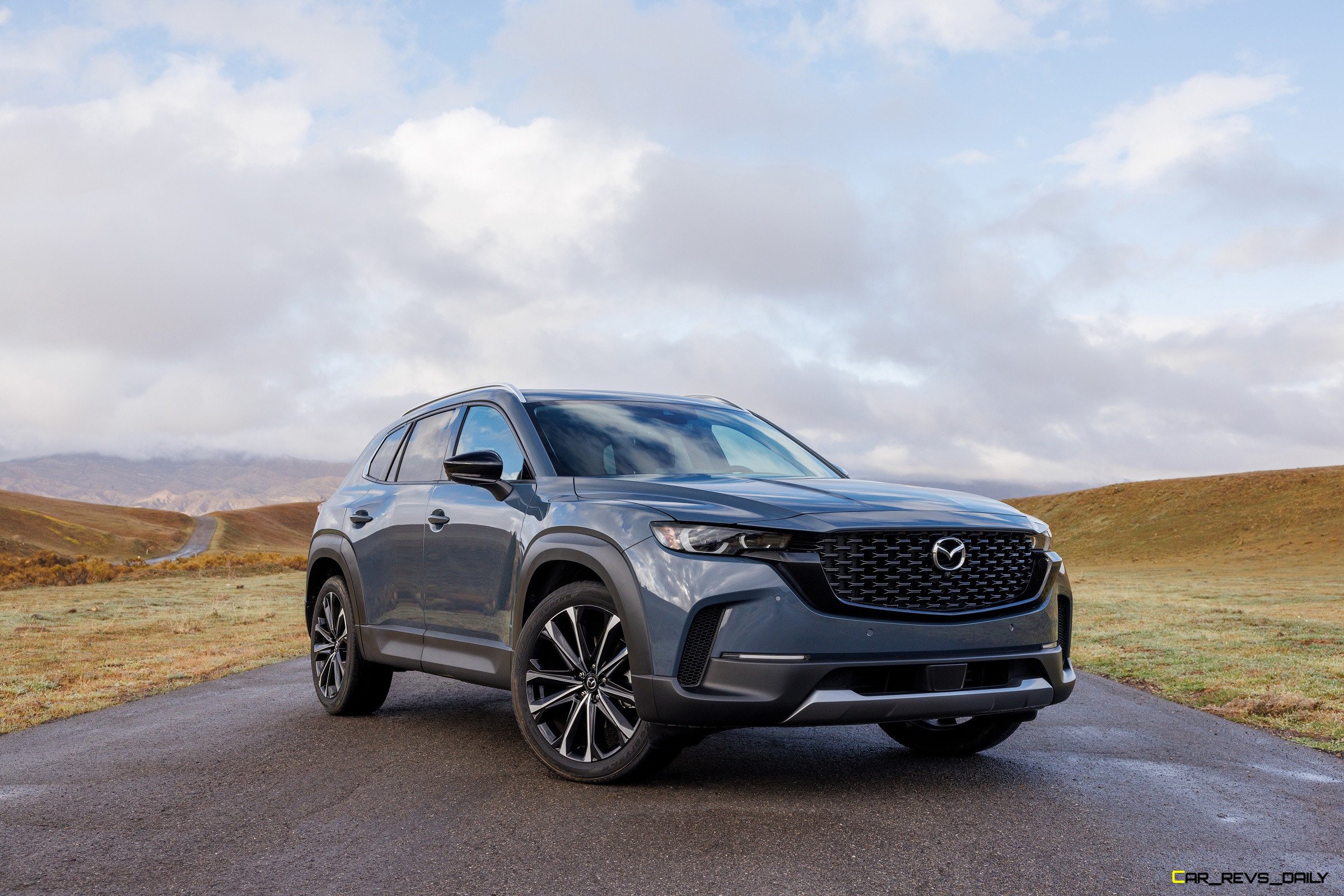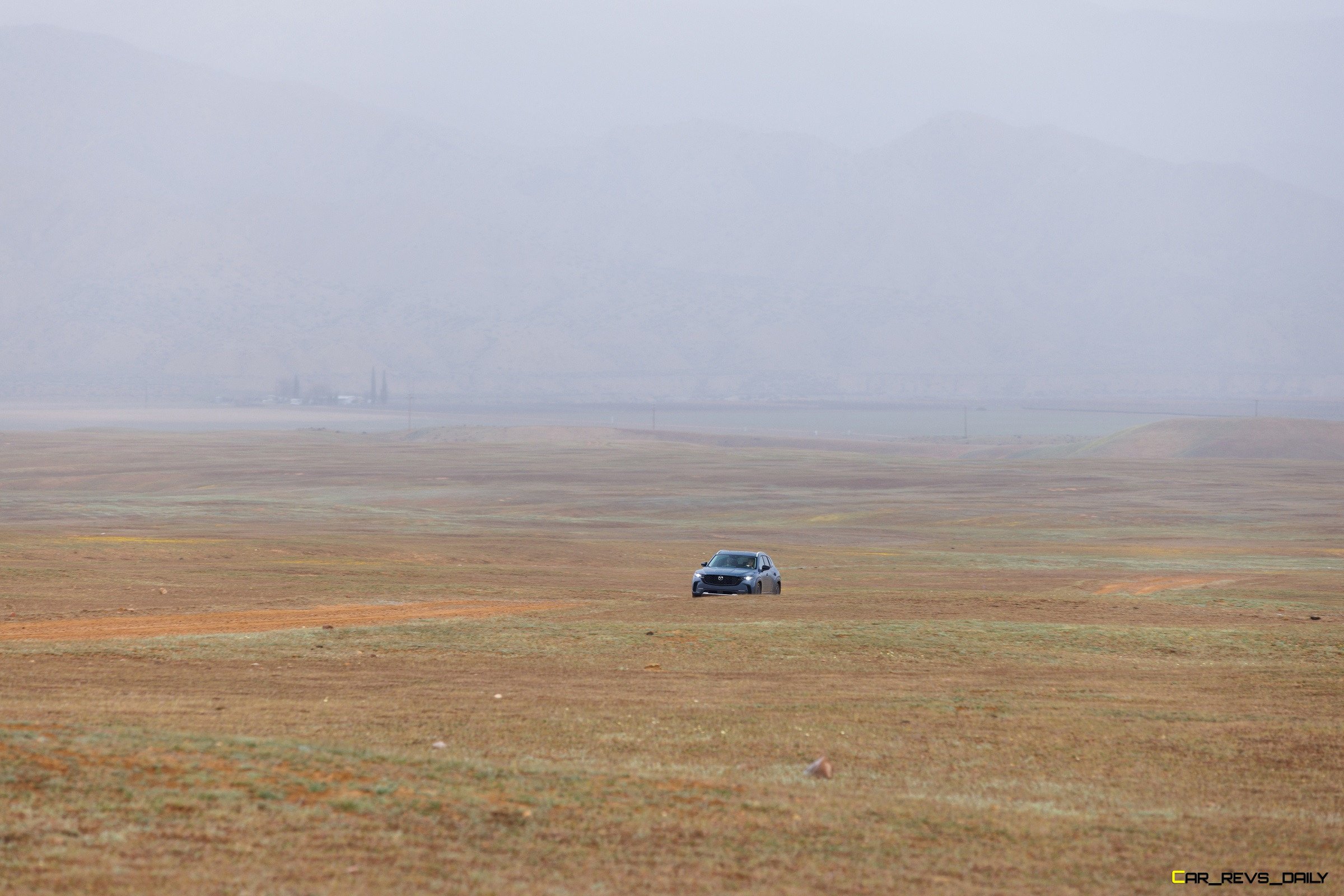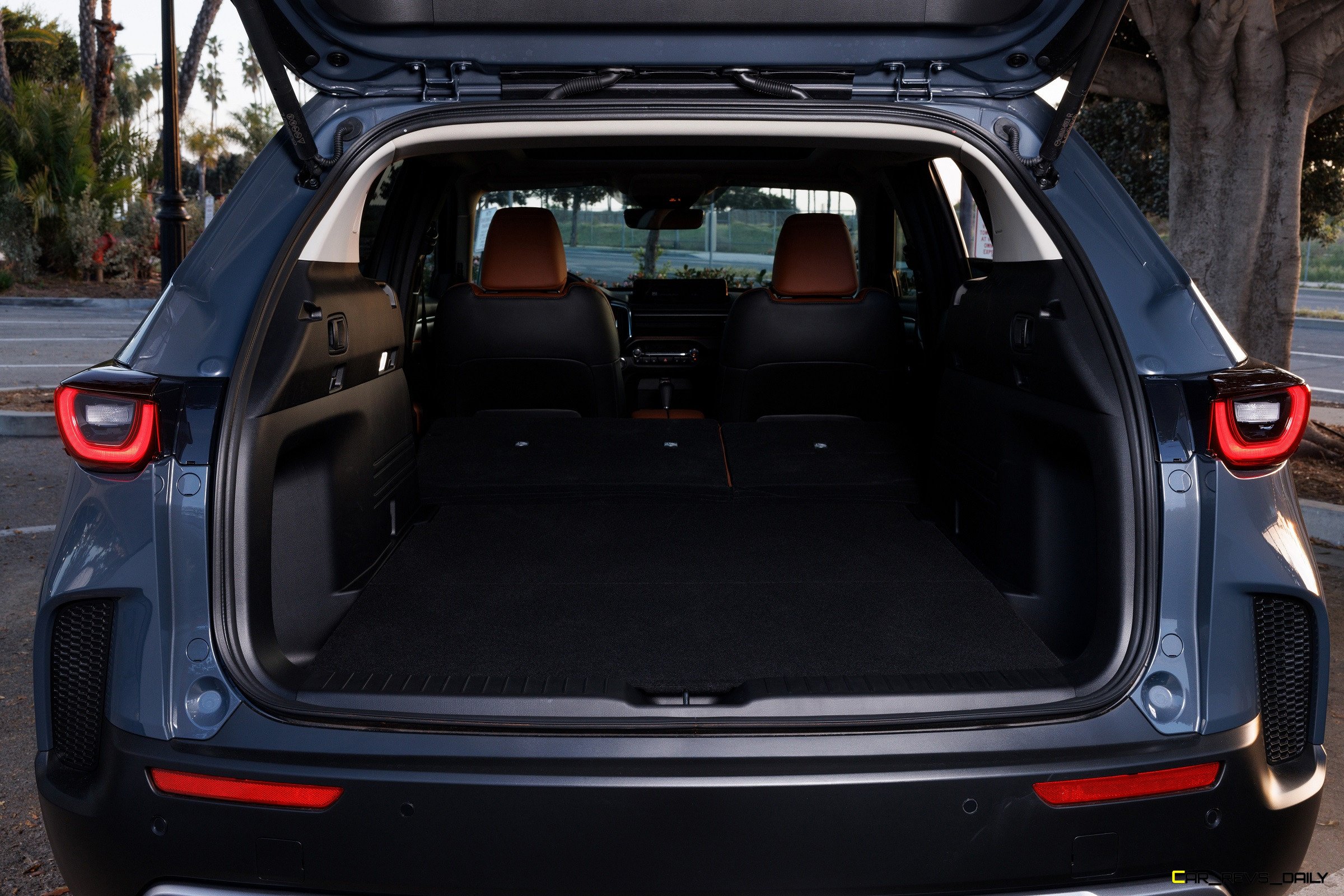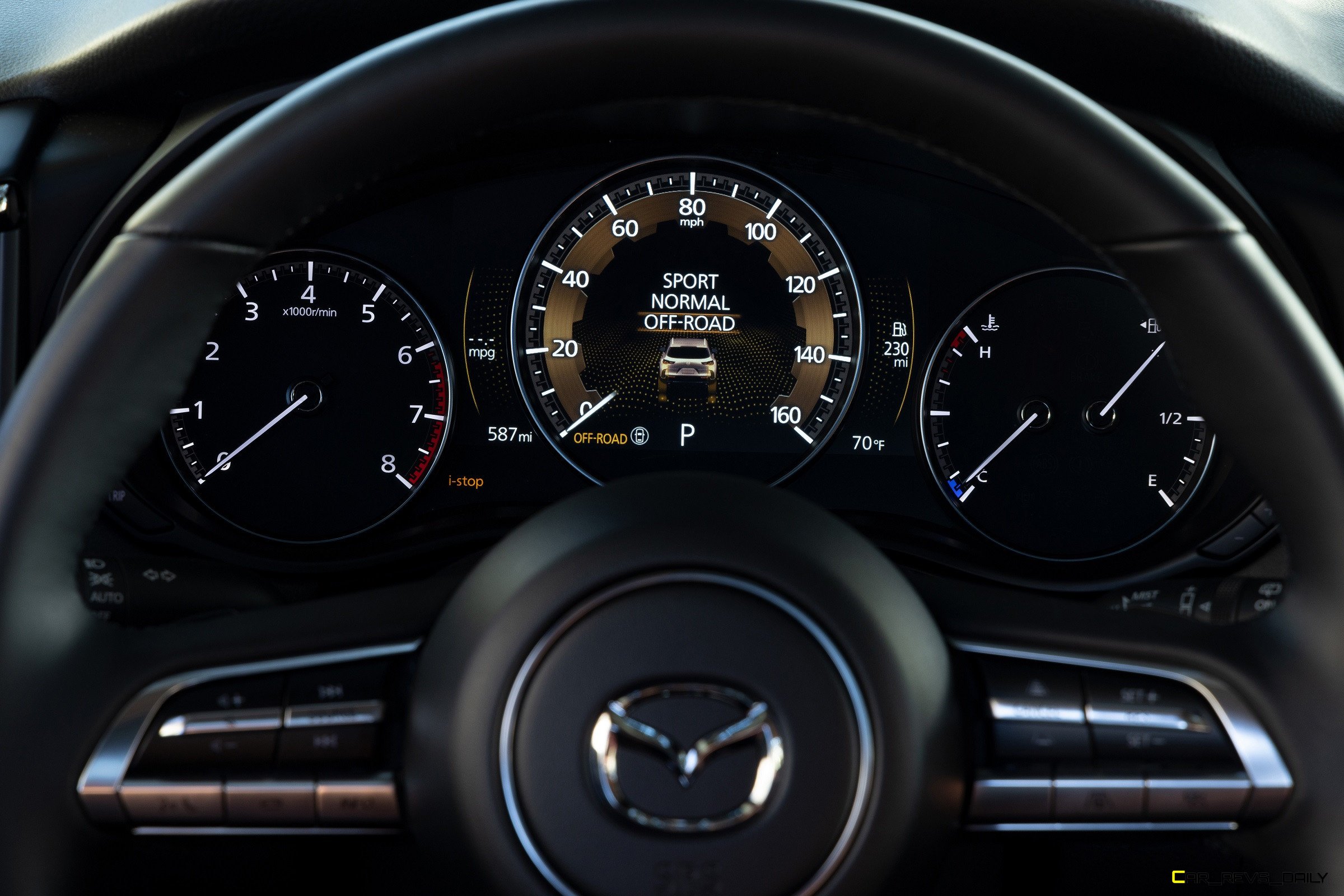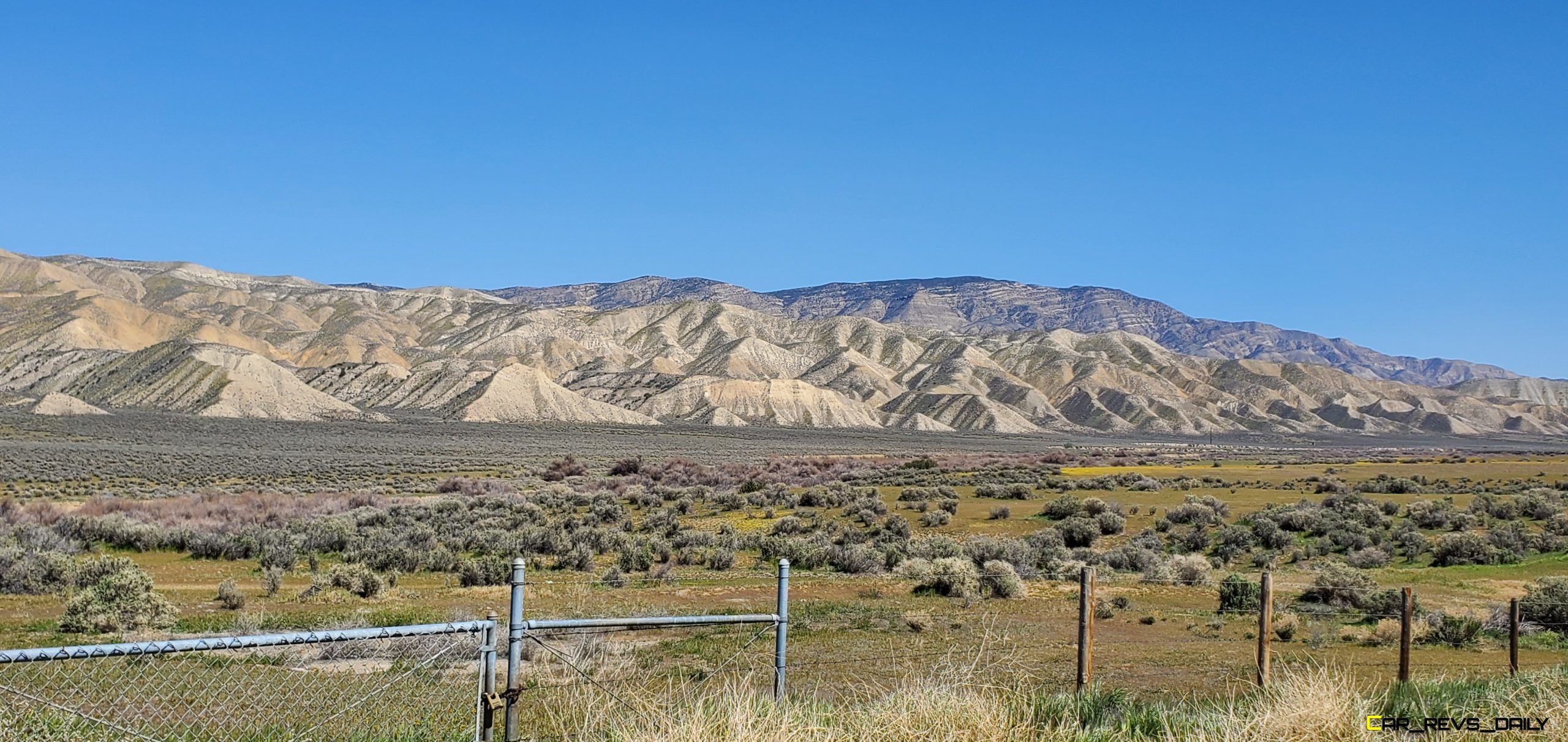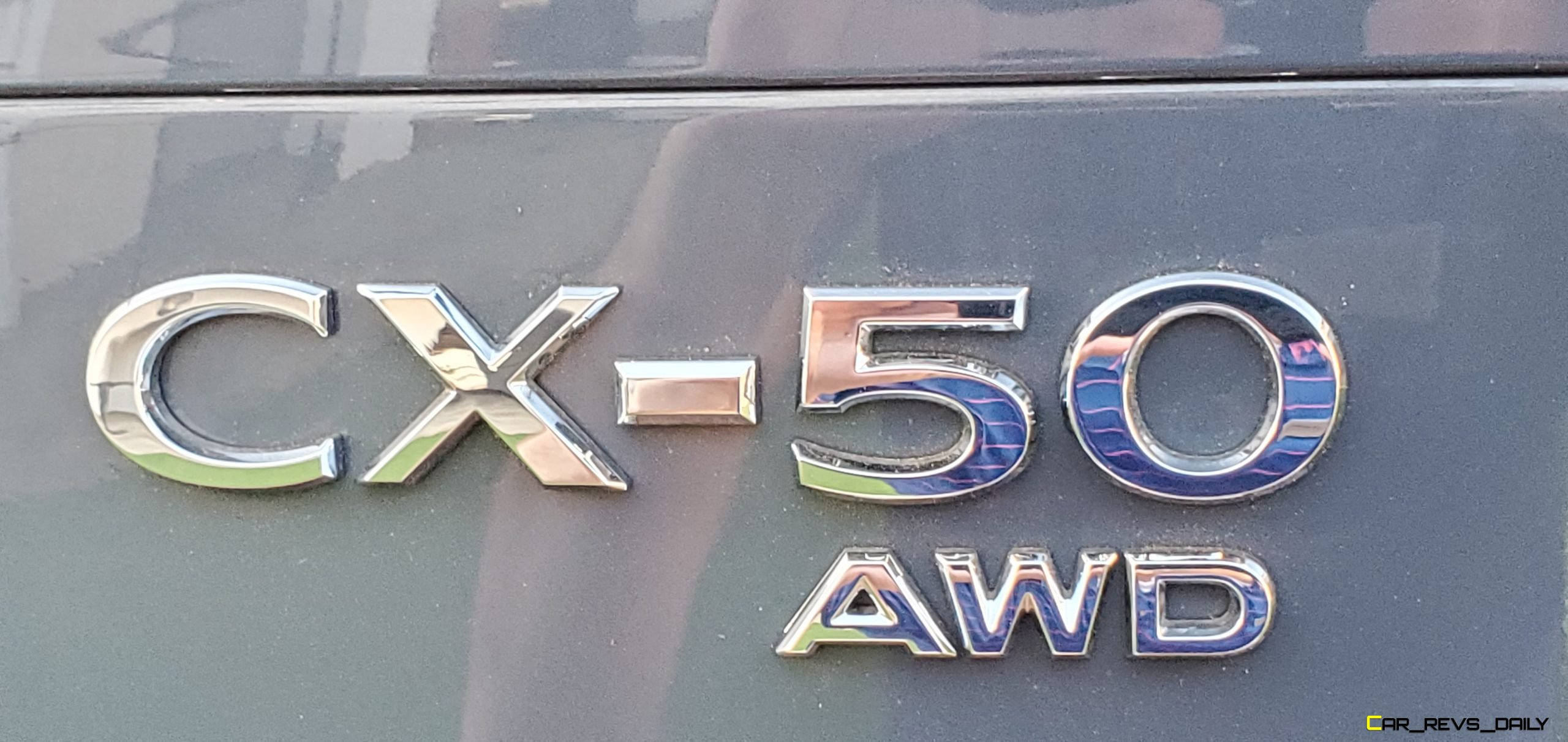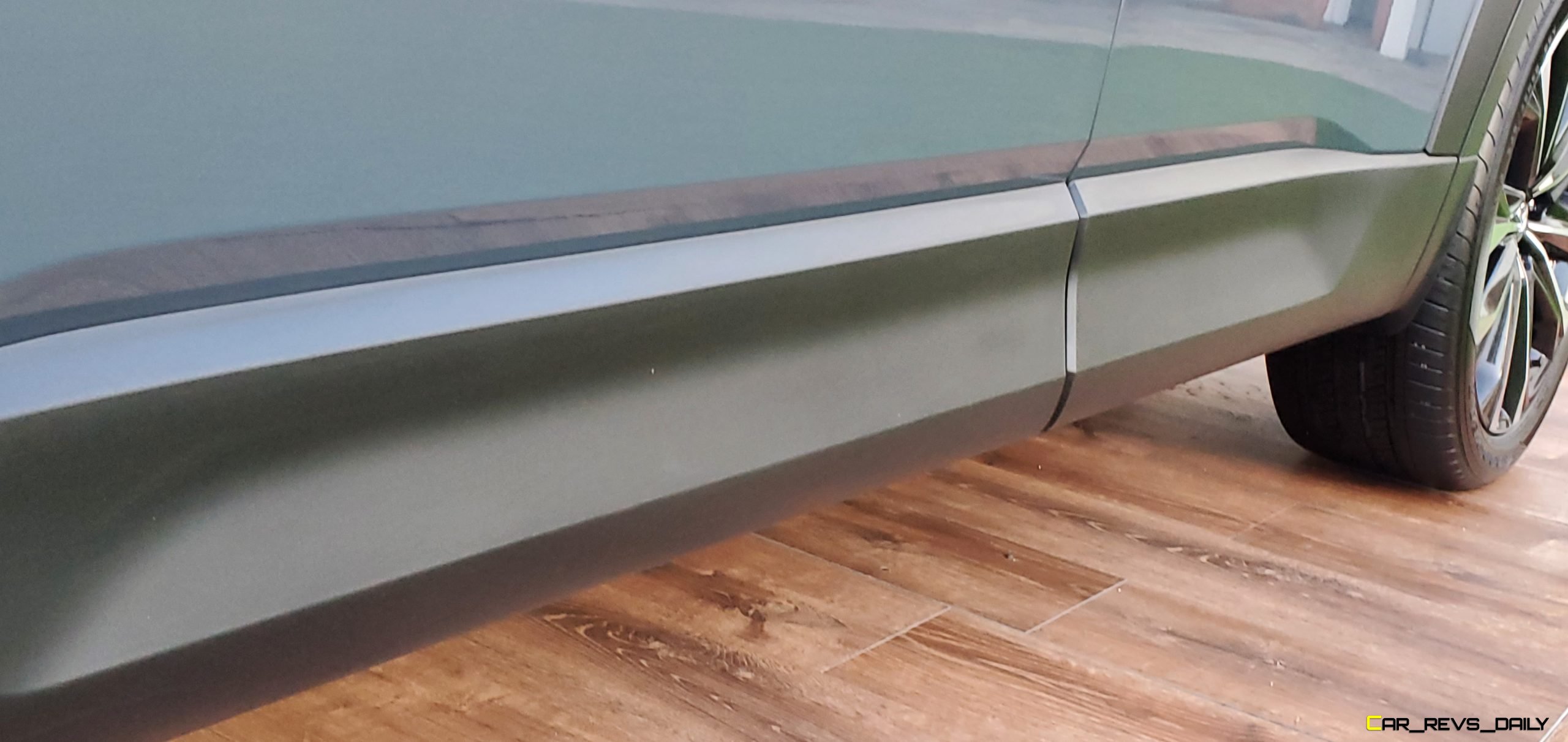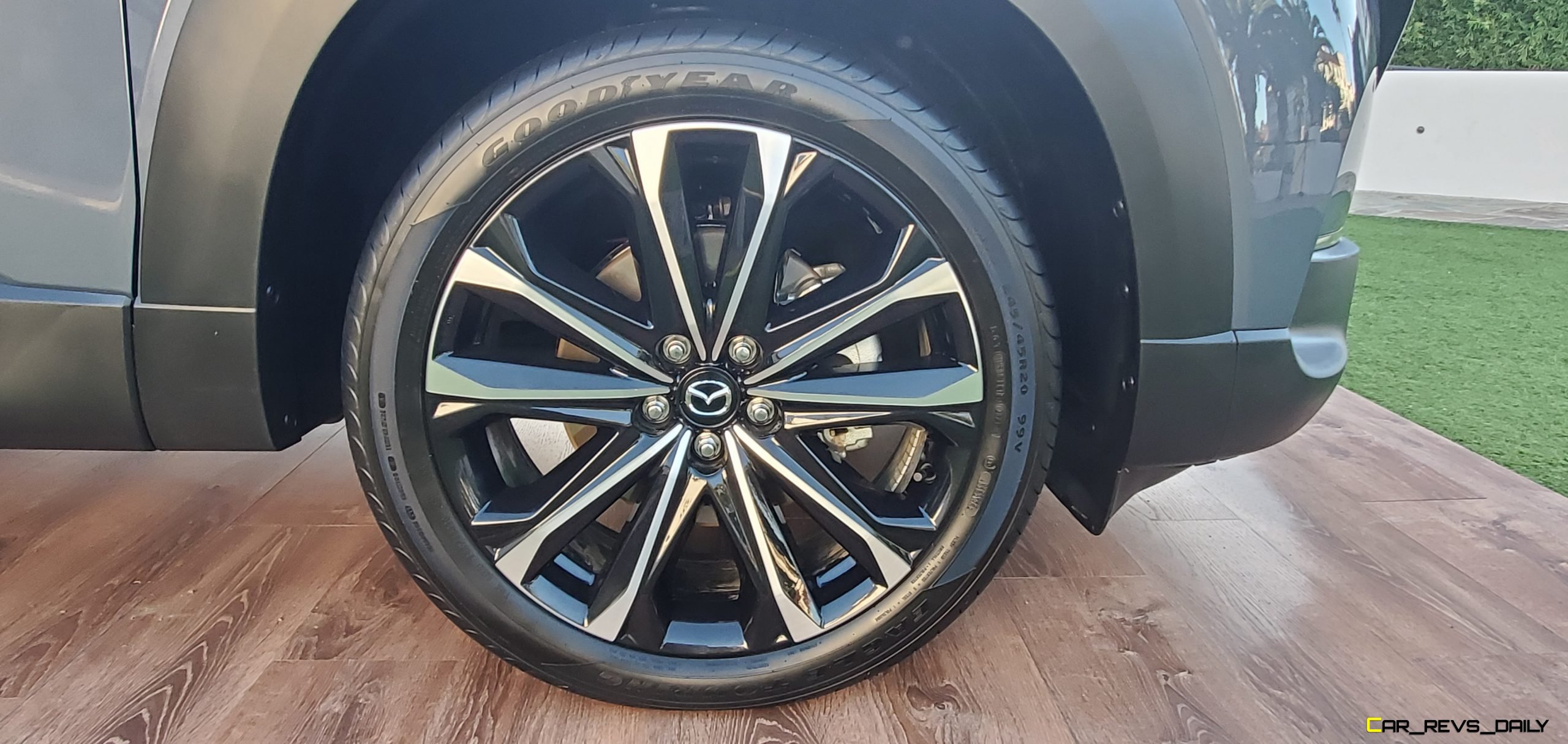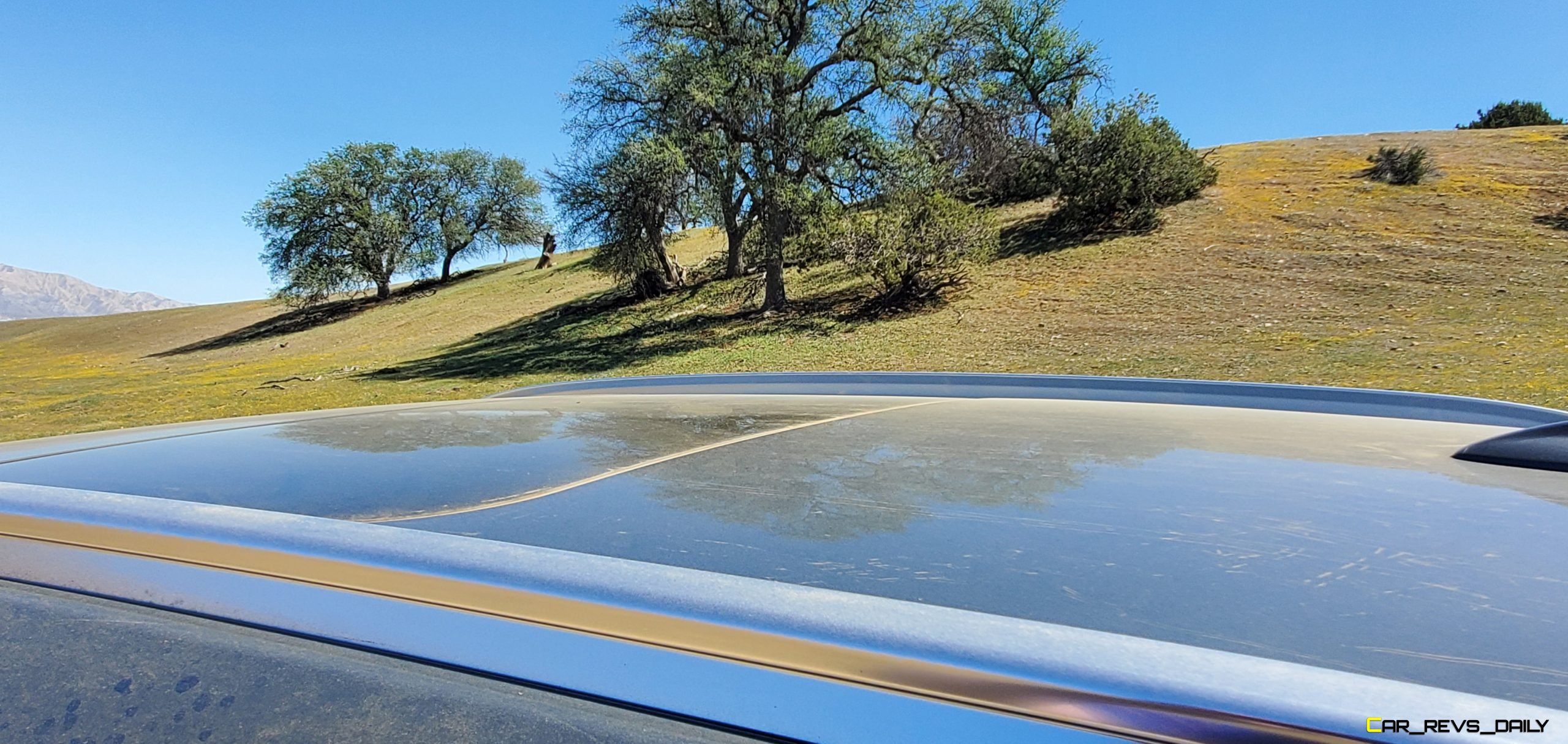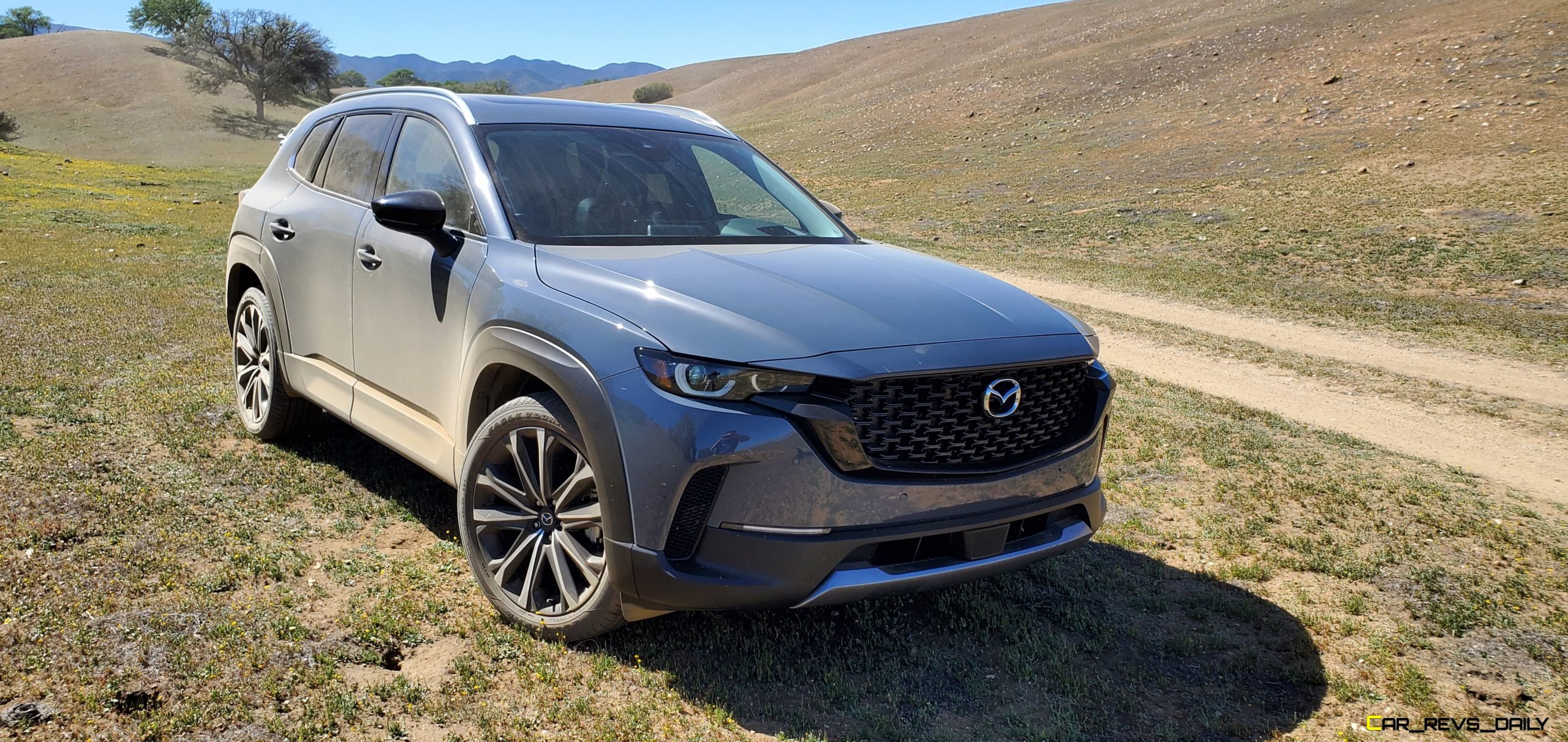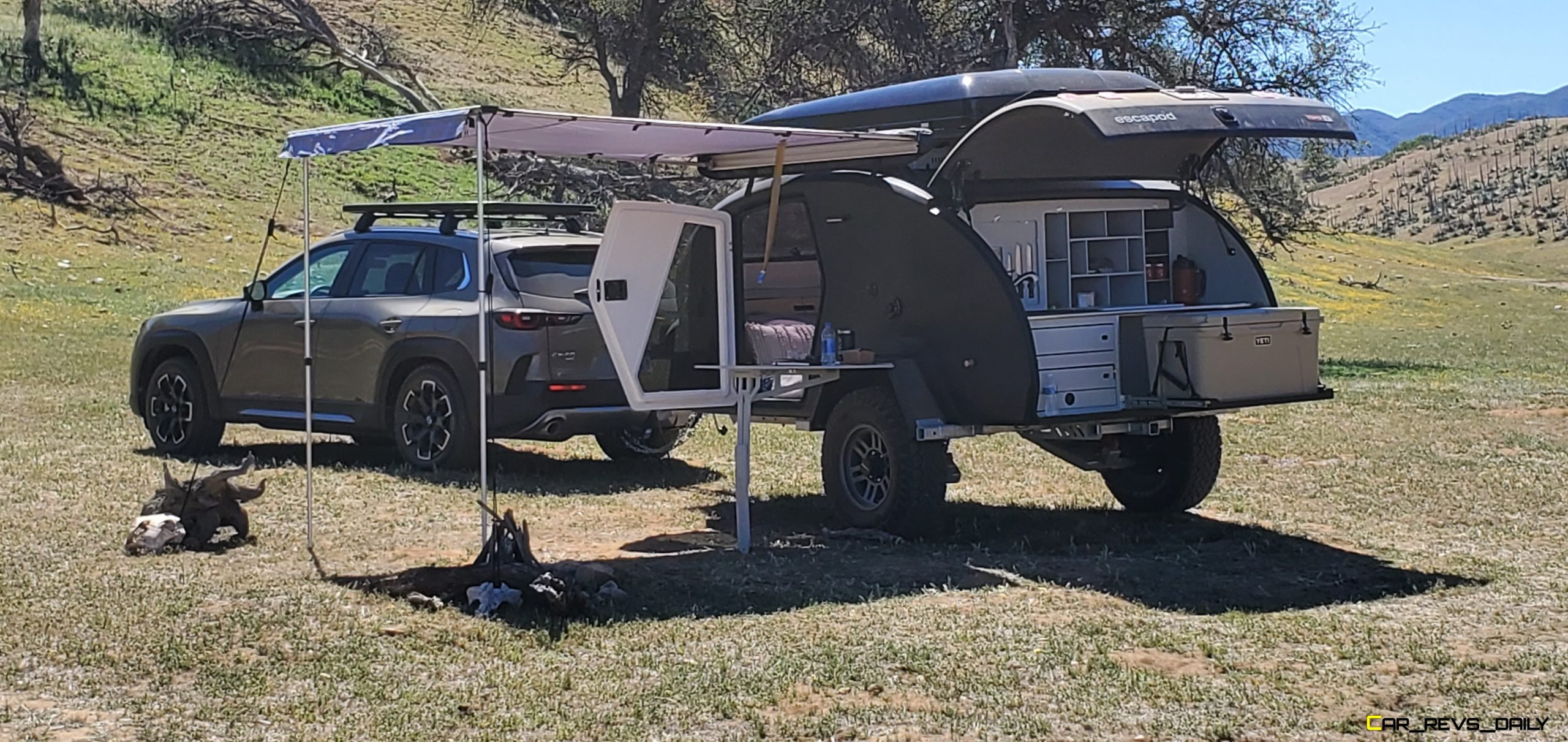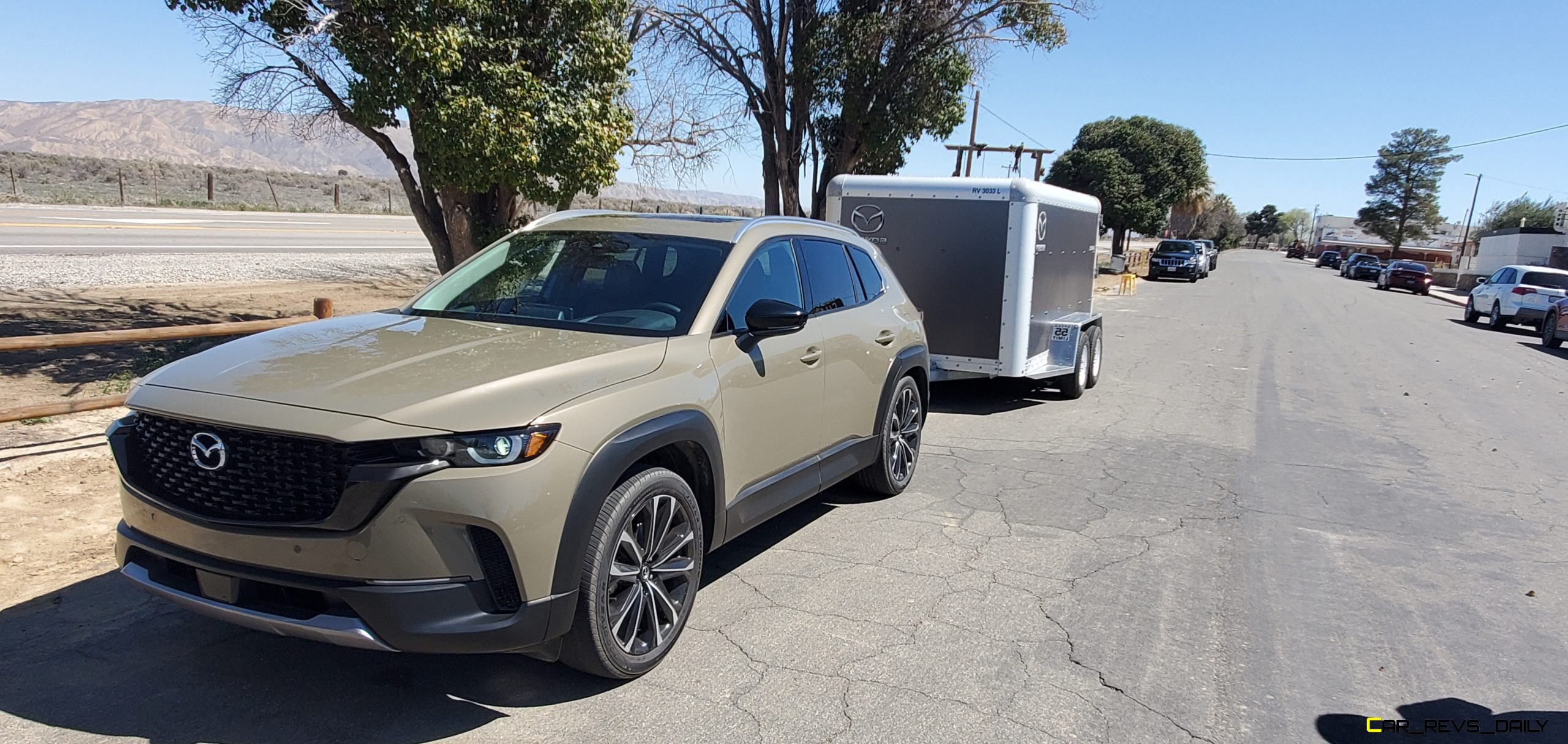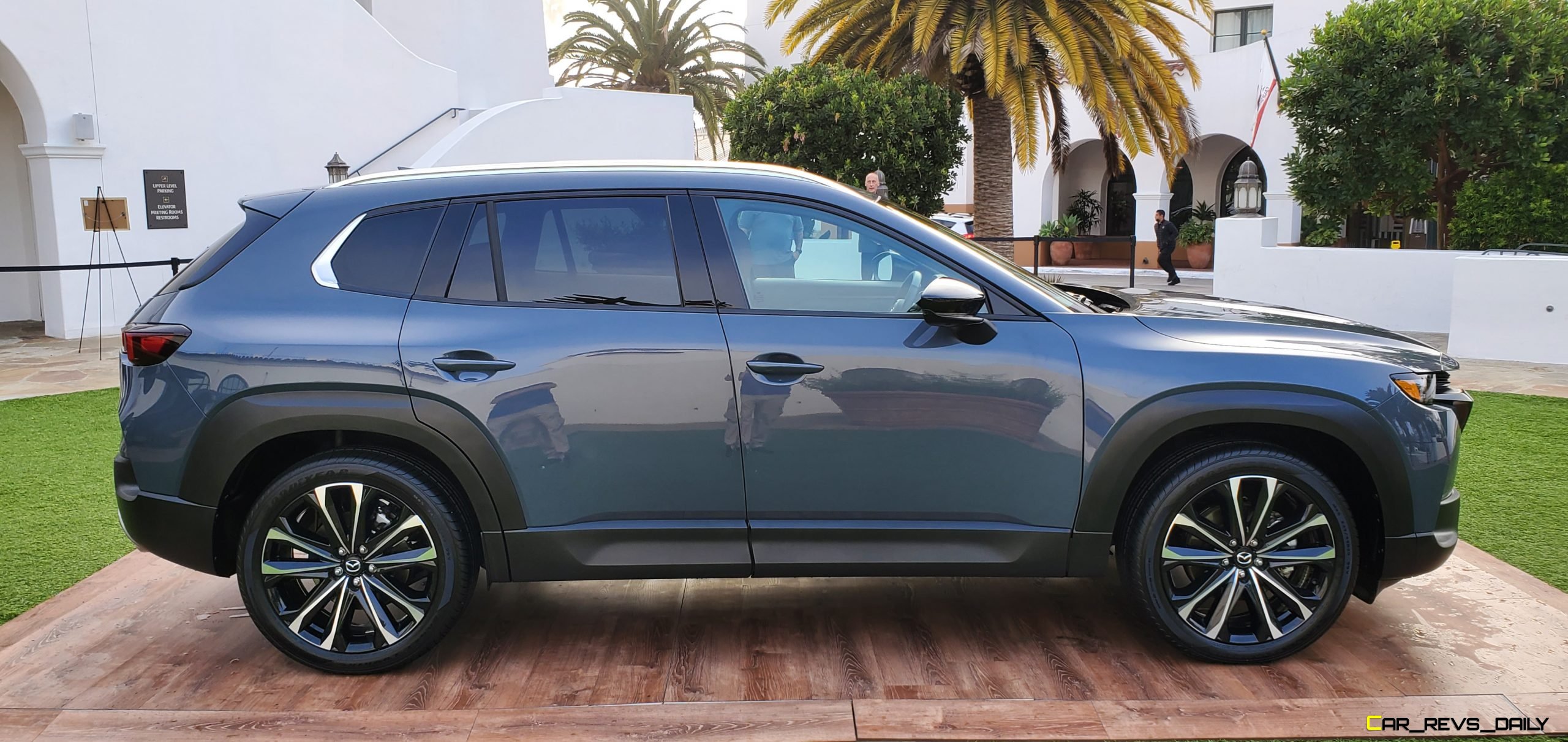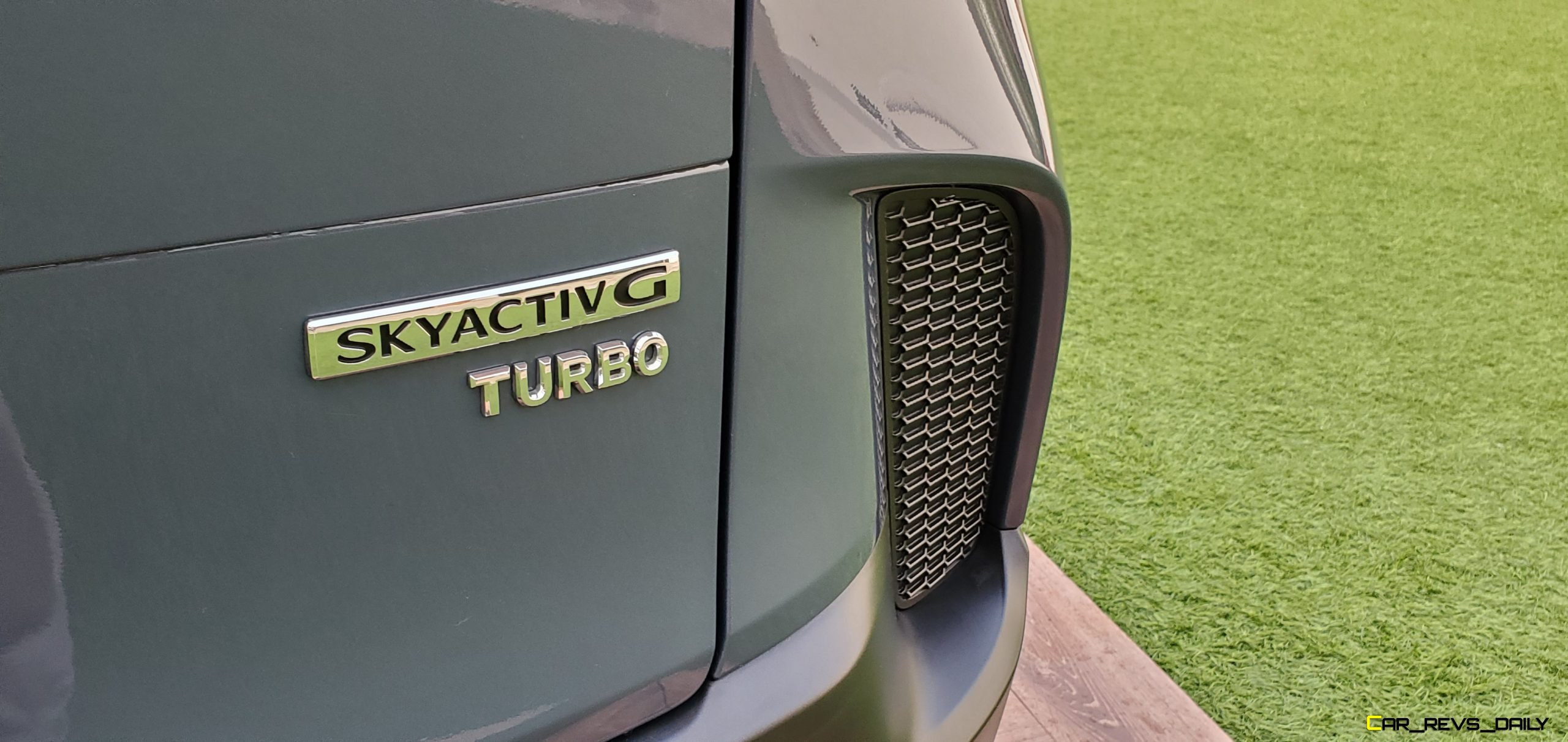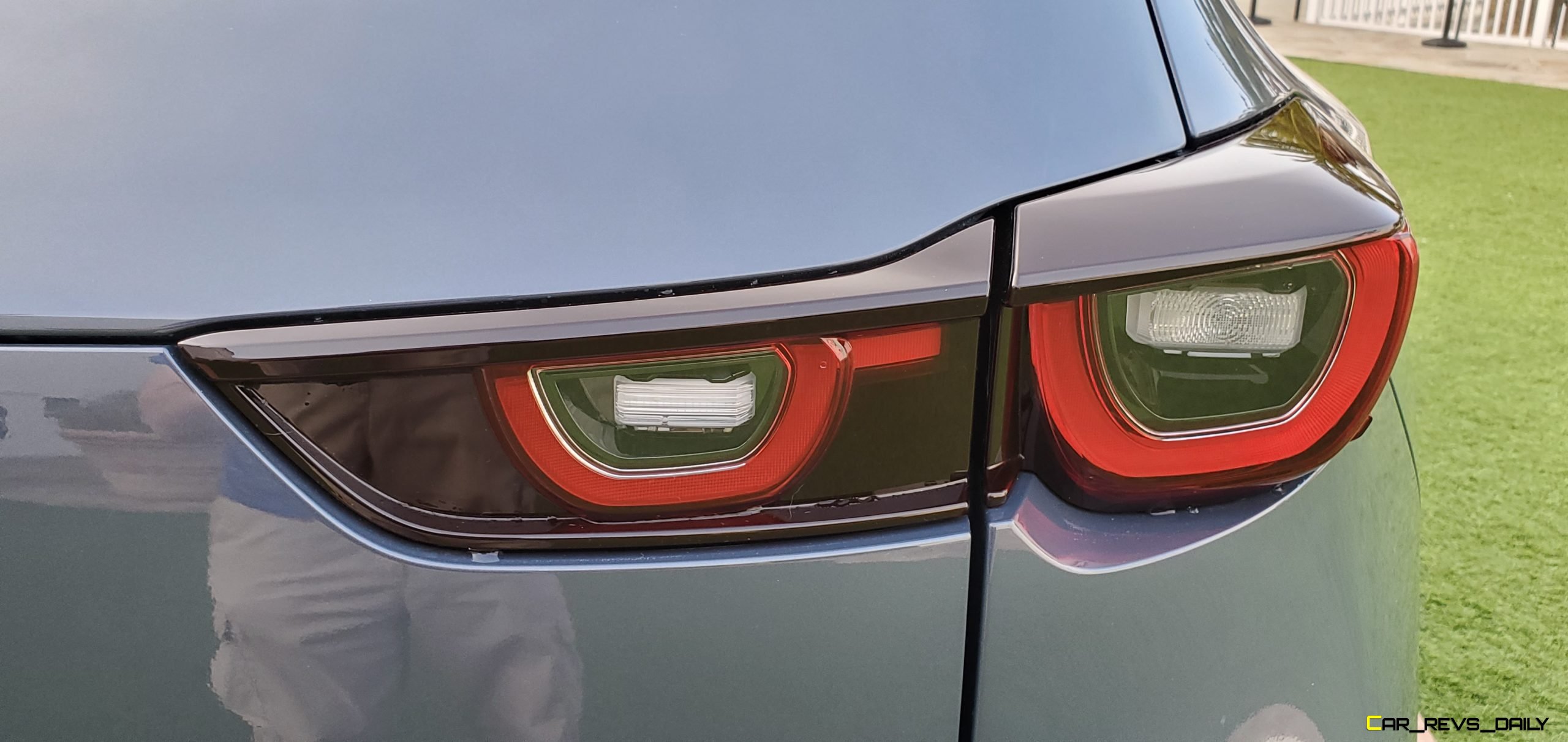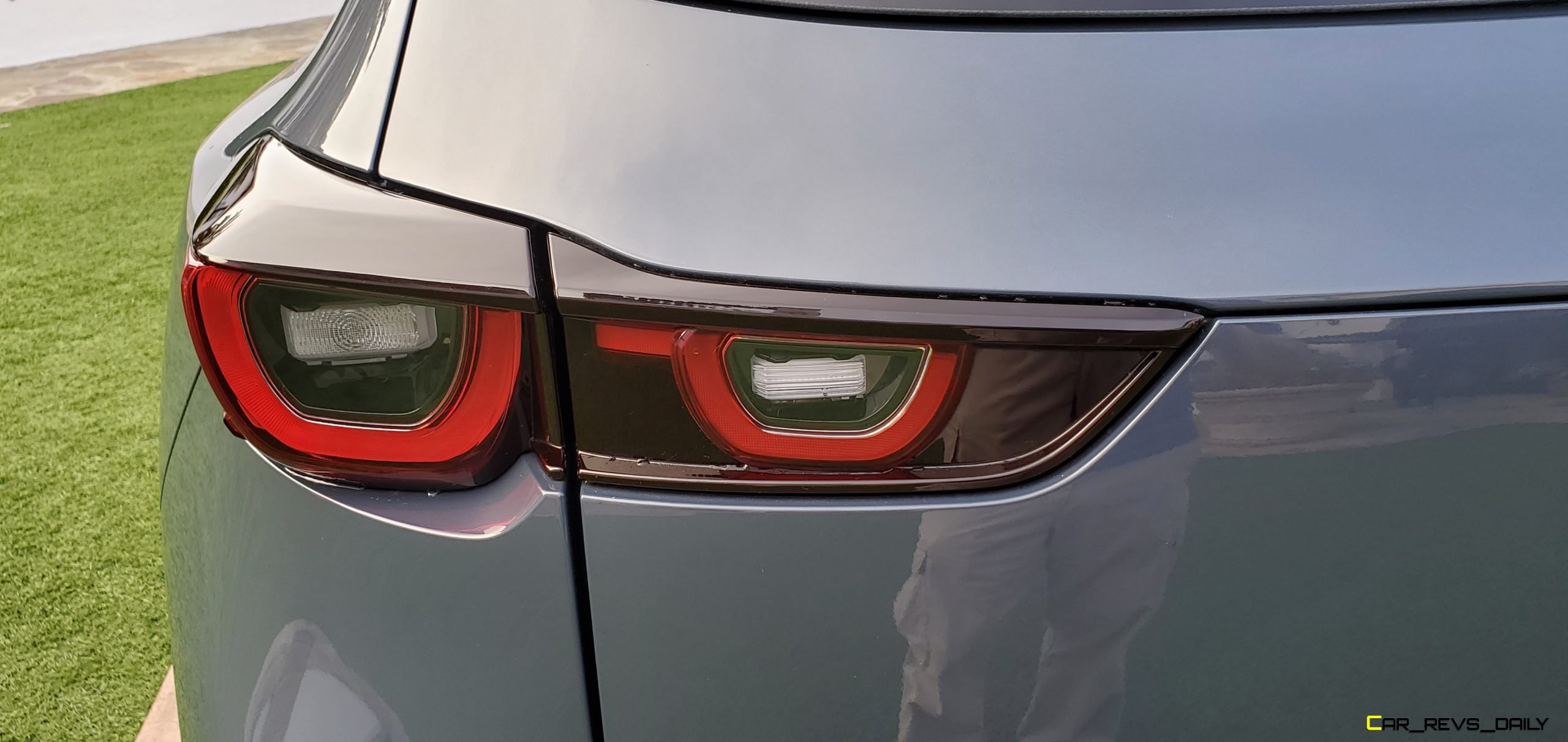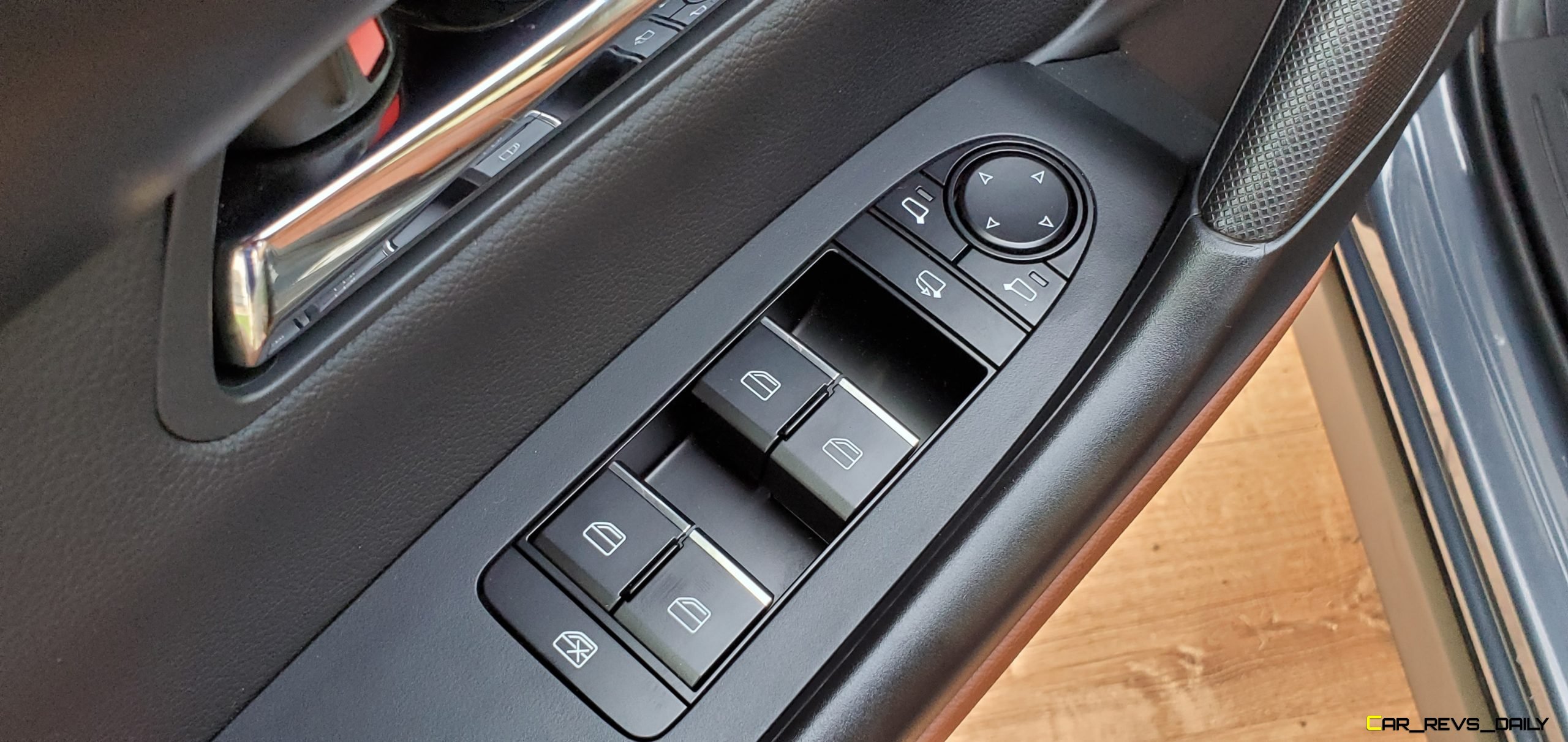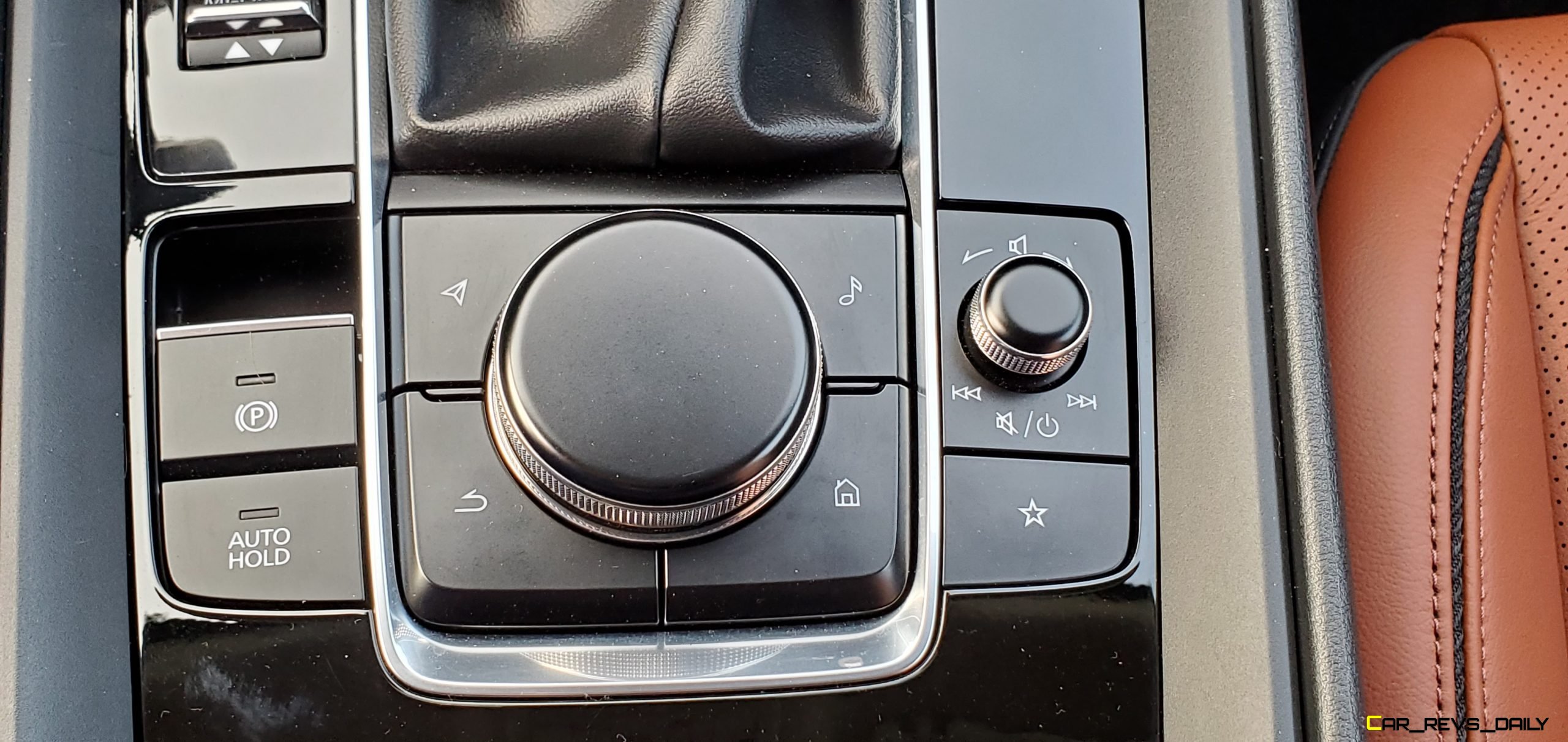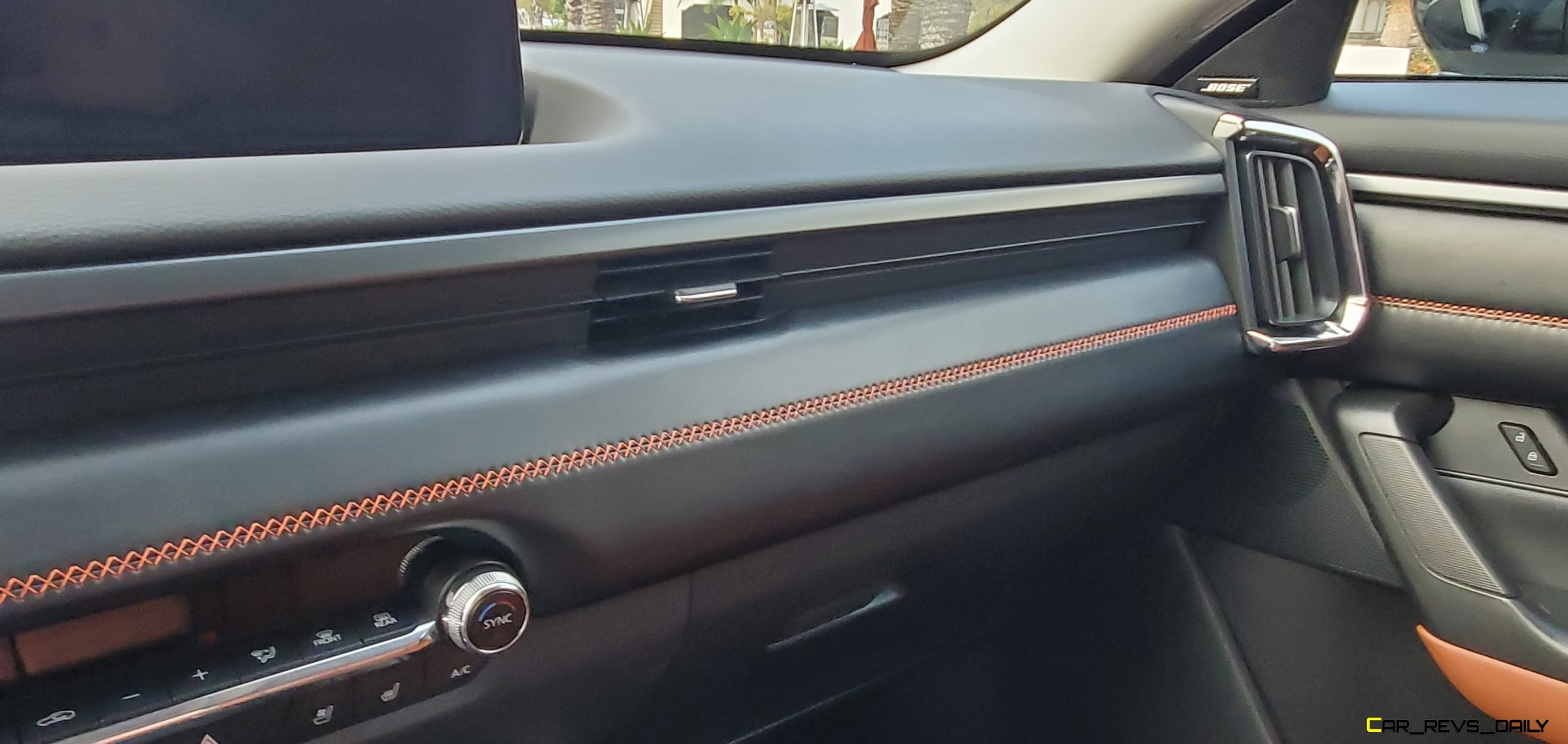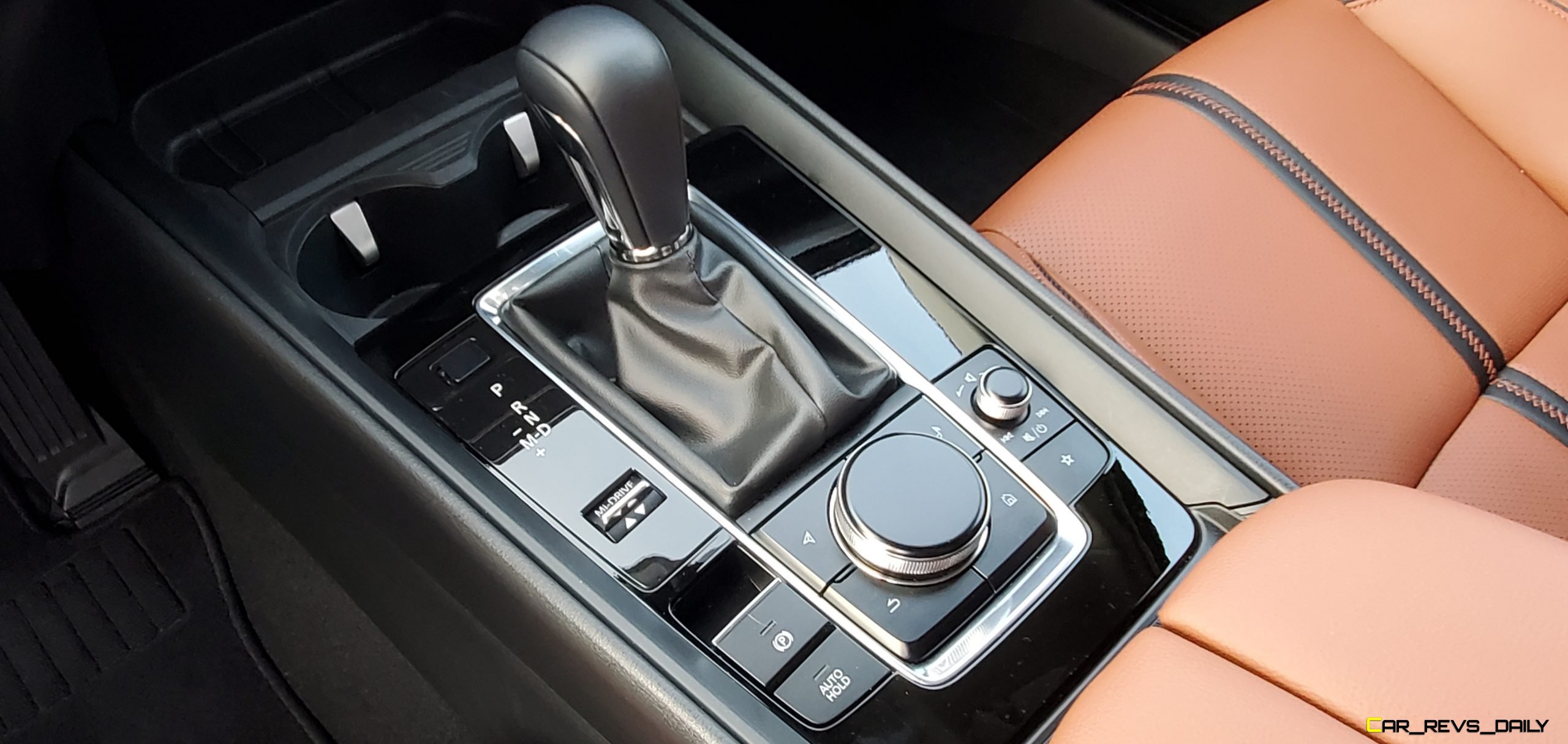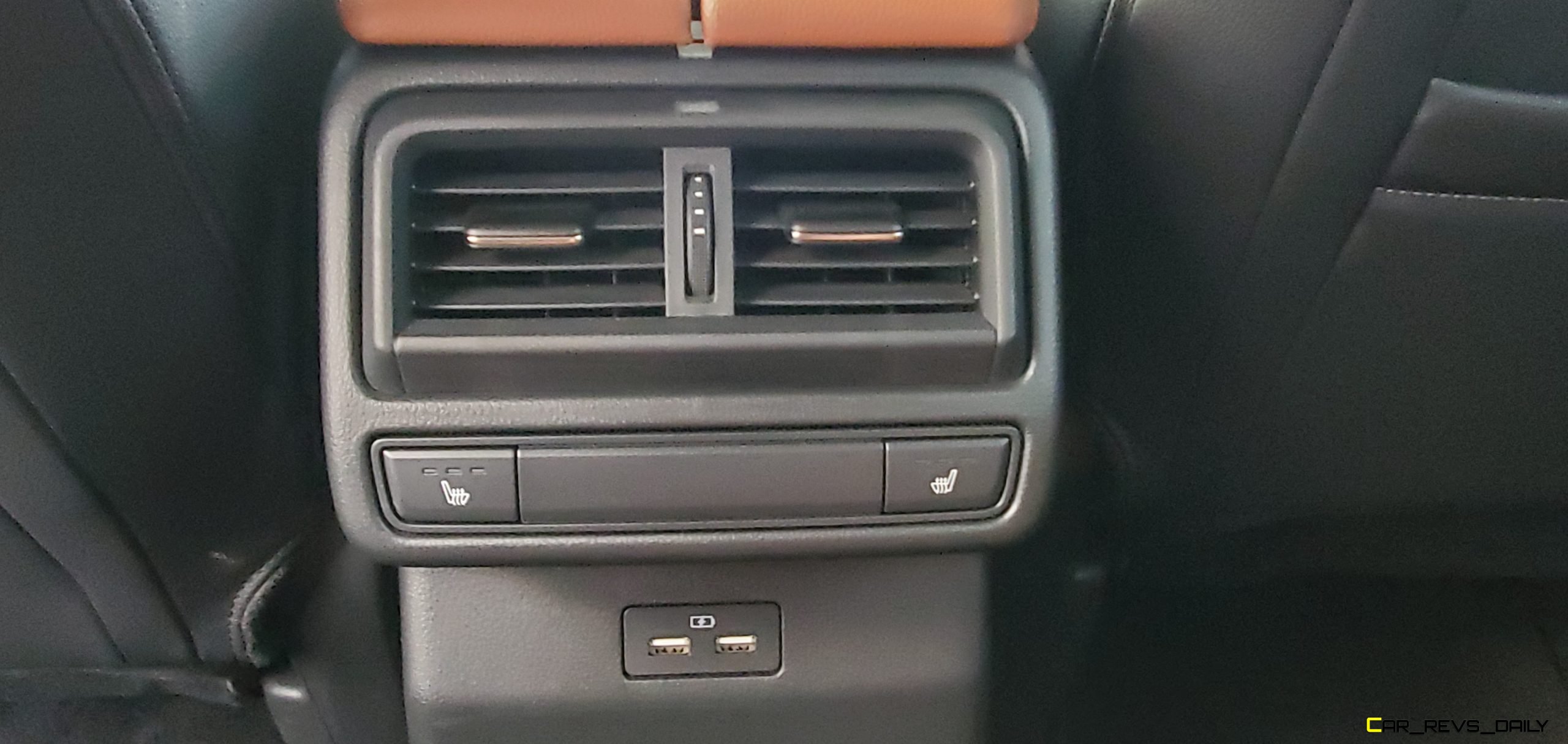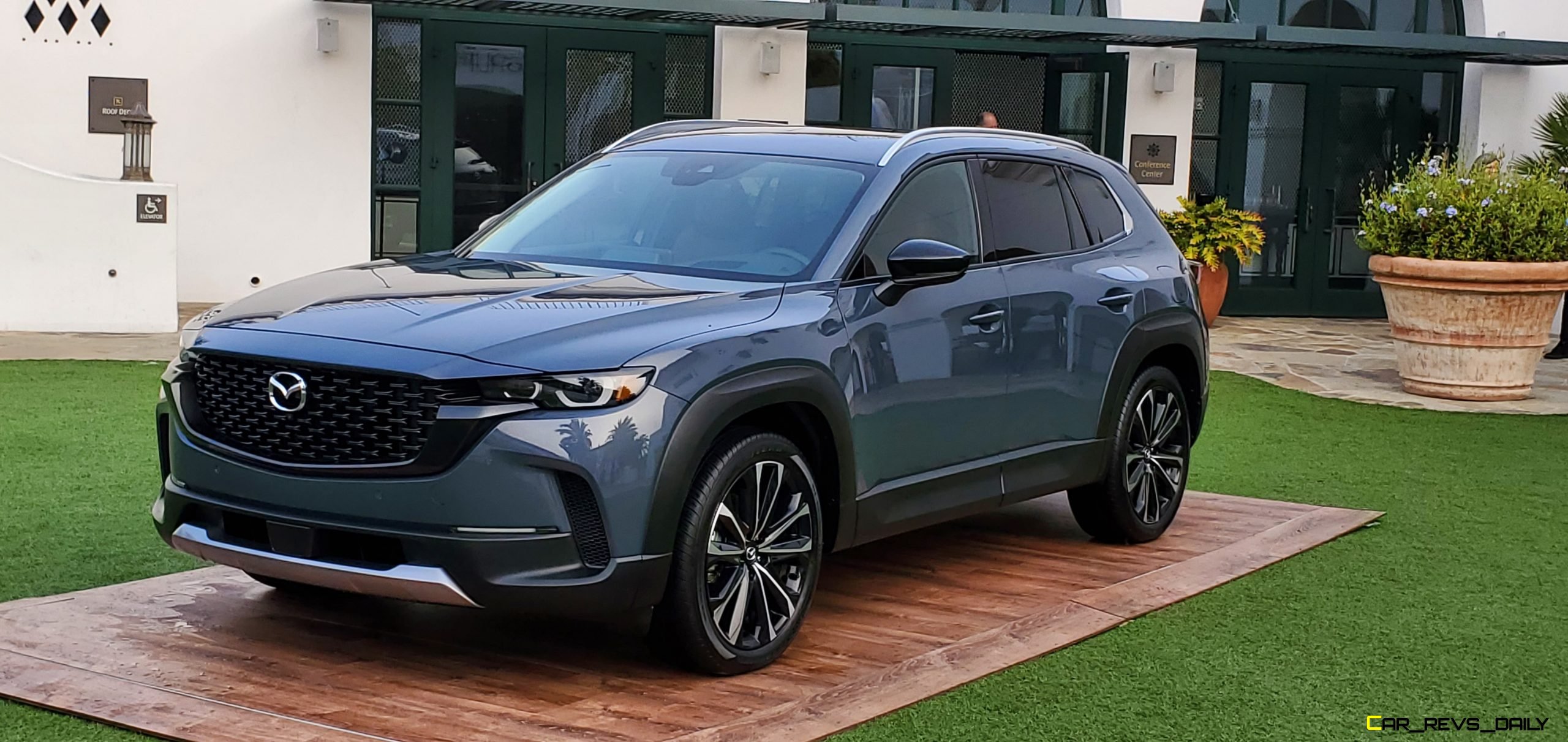When Mazda first confirmed that it was expanding its SUV lineup, we were curious to see precisely what Mazda had in mind. The CX-30 was the first in what Mazda called the “CX” family of utilities, with the model not only replacing the axed CX-3 but also proving that the model was more than the sum of its Mazda 3 sourced parts. Naturally, the company is thinking bigger this time around and has revealed the second member of the gap-filling family, the 2023 CX-50. But does it successfully follow up on the solid praise the CX-30 has received? Or is it a failed hybrid of CX-5 and CX-9 traits?
CX-50 Carves Its Own Unique Identity
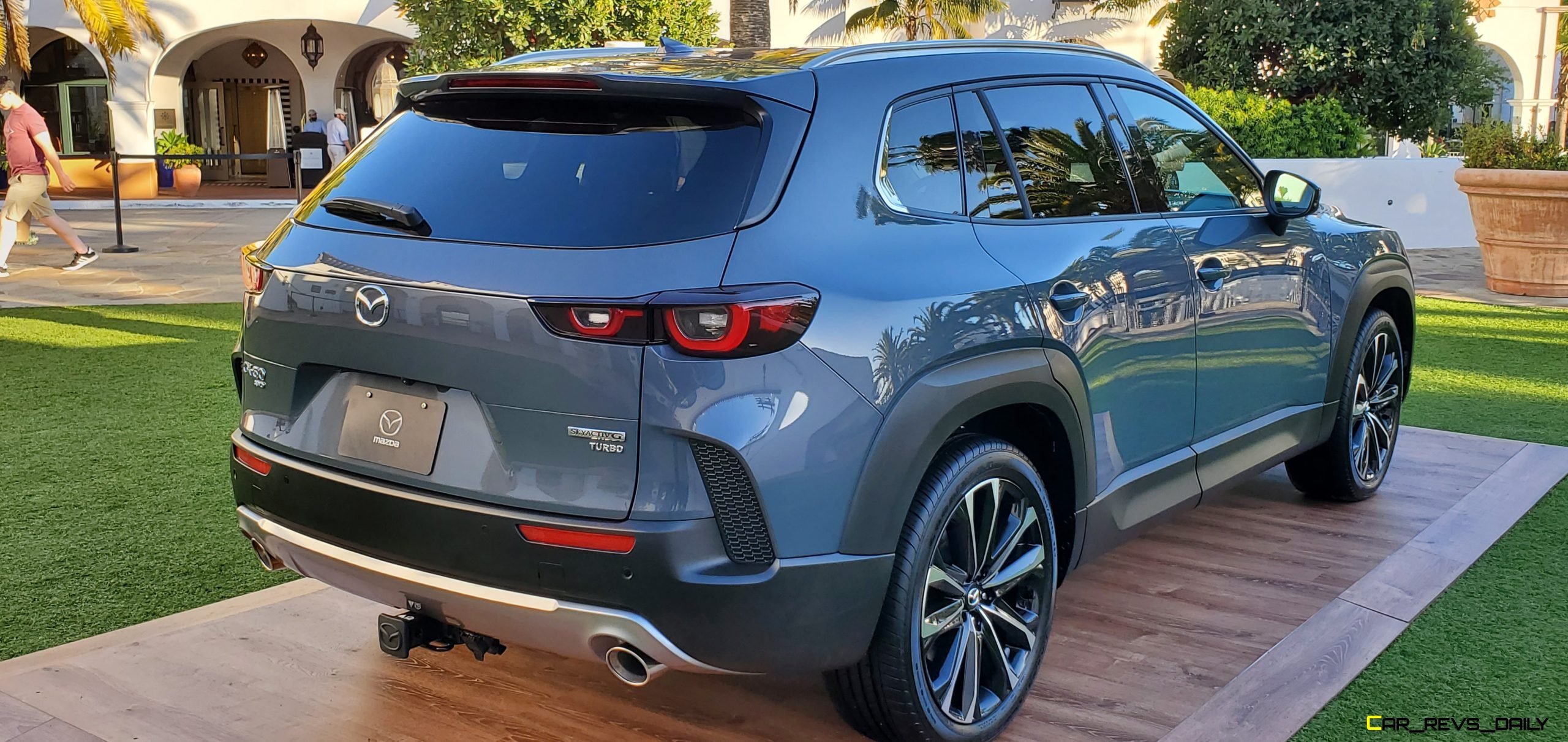
To find out, Mazda invited us up to the beautiful beachside city of Santa Barbara, California, to spend a few hours with its newest recruit. While no trail-ready Meridian Edition models were present (Mazda says they’ll appear in dealer lots soon), the CX-50s that the company did have on hand reflected a small slice of the lineup, Polymetal Grey and Zircon Sand being the two prominent colors on display.
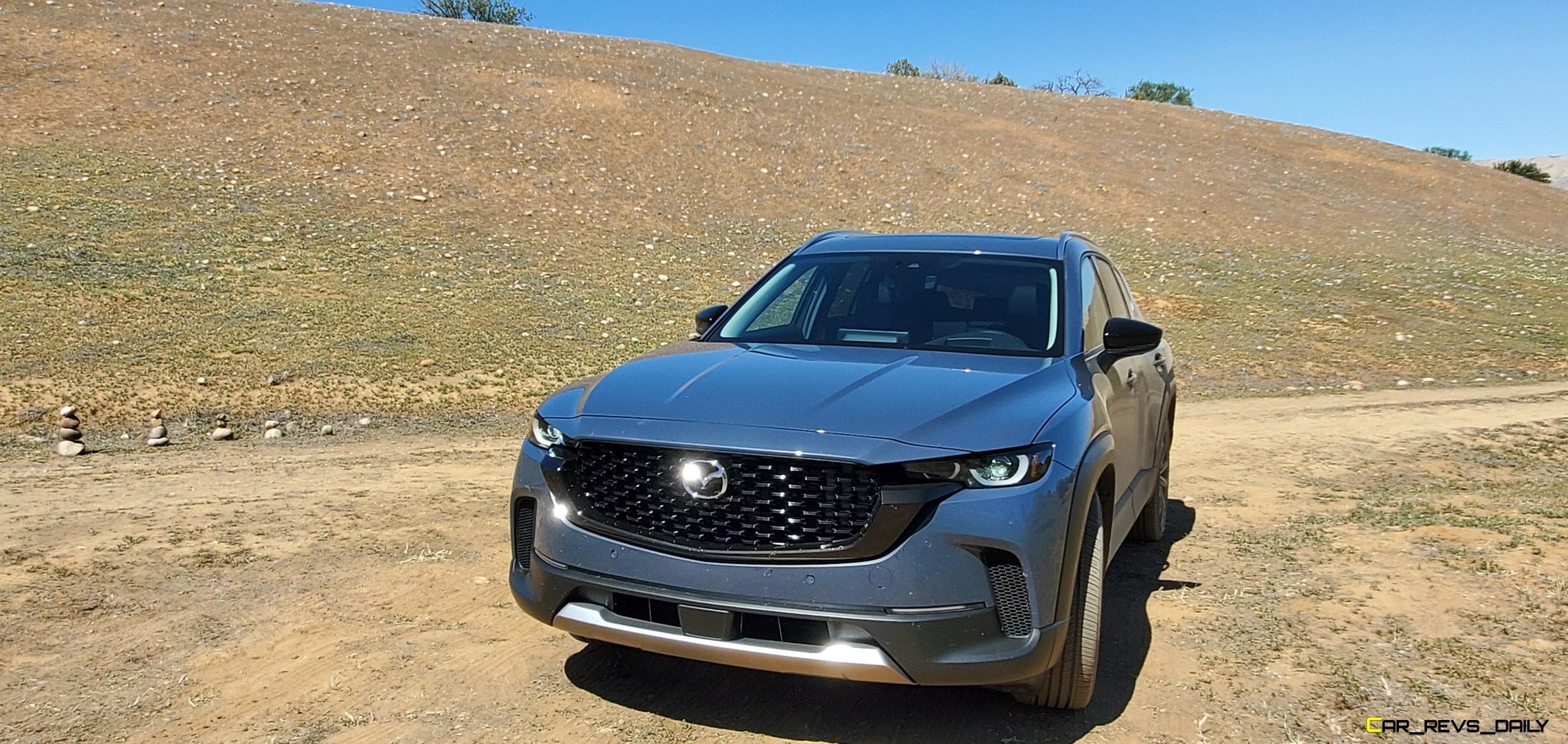
Look past the colors, and the CX-50 does an excellent job of carving its own identity. Mazda is envisioning the CX-50 as a gap filler between the smaller CX-5 and the bigger CX-9 SUV, and the CX-50 manages to pull off this trick pretty well when viewed from the right angles. The exterior styling will undoubtedly remind some of Subaru’s Outback wagon, but Mazda designers quickly pointed out that it aimed at the traditional SUV buyer. The exterior styling takes riffs from other Mazda models regarding its core sightlines, with the aggressive head and taillights being complimented by swoopy bodywork. The overall look departs from recent Mazda entries, with the CX-50 projecting a more rugged yet functional look.

The CX-50 even comes with rugged grey plastic cladding that complements the design and functions in protecting certain areas from debris. Our lone gripe came with the venting on the front and rear bumper. While the front ones are functional, the rear ones are purely decorative, which is an odd choice, and we wished that Mazda would have made the rear vents functional too to help provide a more balanced canvas.
CX-50 Interior Is All About The Details

As we began our journey up some of California’s beautiful coastal freeways, the CX-50’s ability to deliver the goods on long-haul comfort truly began to shine through. While the platform is shared with the smaller CX-30, the CX-50’s extra length allows it to have superior ride quality, with the Polymetal Grey tester we experienced delivering glass-smooth comfort. We’re curious to see if that impression holds on some of the pothole-filled roads that dot our eastern outposts, but the strong first impression was hard to ignore.
The suspension’s ability to nullify imperfections also gave us more time to look around the cabin and marvel at the large panoramic sunroof, which is the first such offering on a Mazda. It did a good job letting plenty of light into the cabin. Mazda claims that the massive swath of glass is part of a broader effort to introduce cues learned from nature into various aspects of the CX-50, but we’re glad that Mazda finally caught up with the times and offered this option for buyers.
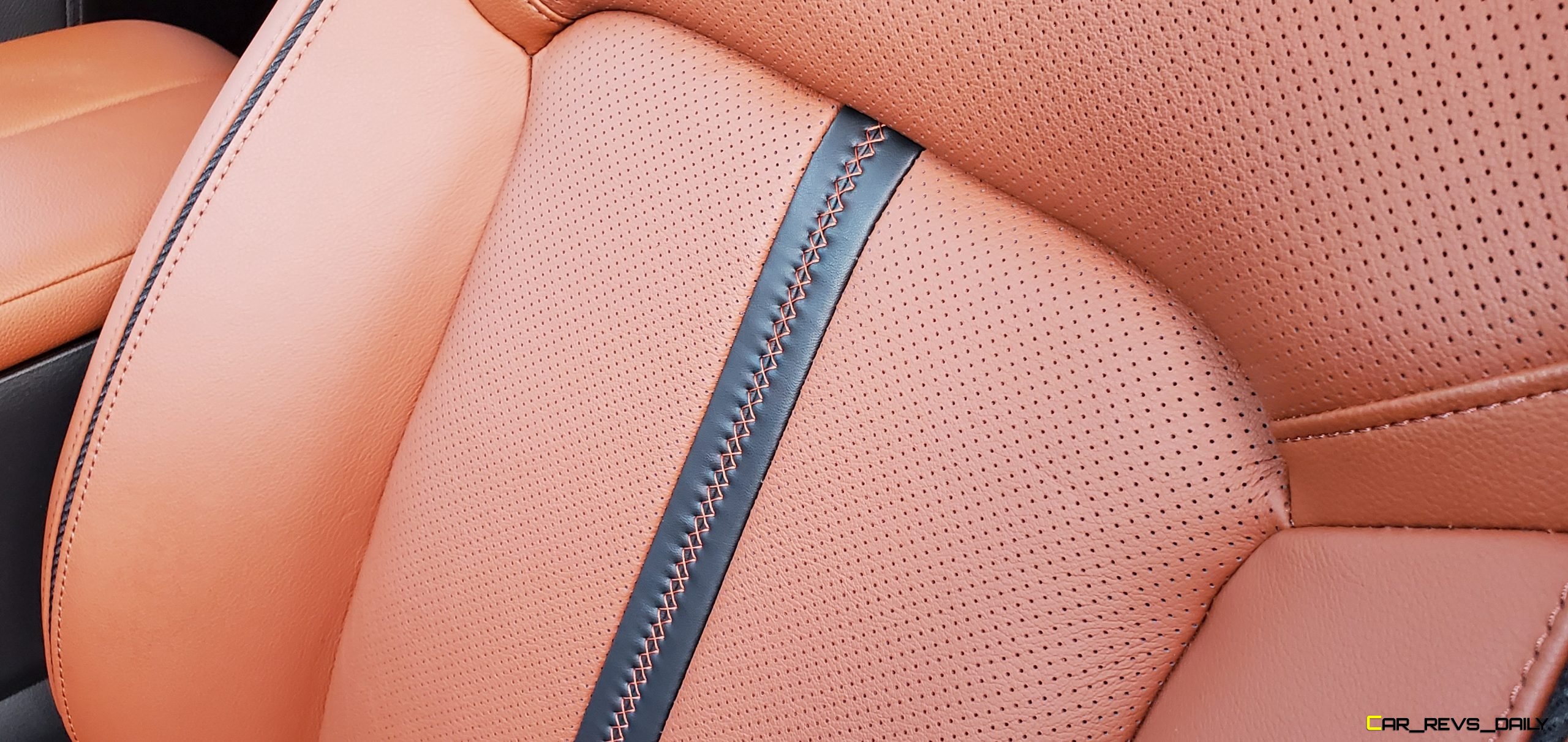
The rest of the cabin follows the same core script that we have seen in other Mazda offerings, with premium materials balanced out by fine details. The CX-50 channels some of the CX-30 in the core scheme of things, but the vertically mounted dashboard and large square-shaped vents give it a truck-like feel. The familiar 8.8-inch infotainment system is here, but while Mazda engineers did include some limited touch capability to the 10.25-inch screen in higher trims like our example, this is still a unit that’s designed to be operated by the large commander knob. That means buyers will still have to deal with some moments of frustration when accessing certain functions on the move, especially the navigation software. A wireless phone charging pad is nestled under the lid for the center bin, and front passengers get access to two USB ports as well as two cupholders, a smaller bin further up, and large door cubbies that can hold small or medium-sized bottles of water if needed. Like other SUV offerings trying to blur the lines between the station wagon and a traditional SUV, the Mazda has lousy rear visibility due to thick rear pillars, which forced us to use the mirrors and assistance from the BLIS system for certain lane-change maneuvers.
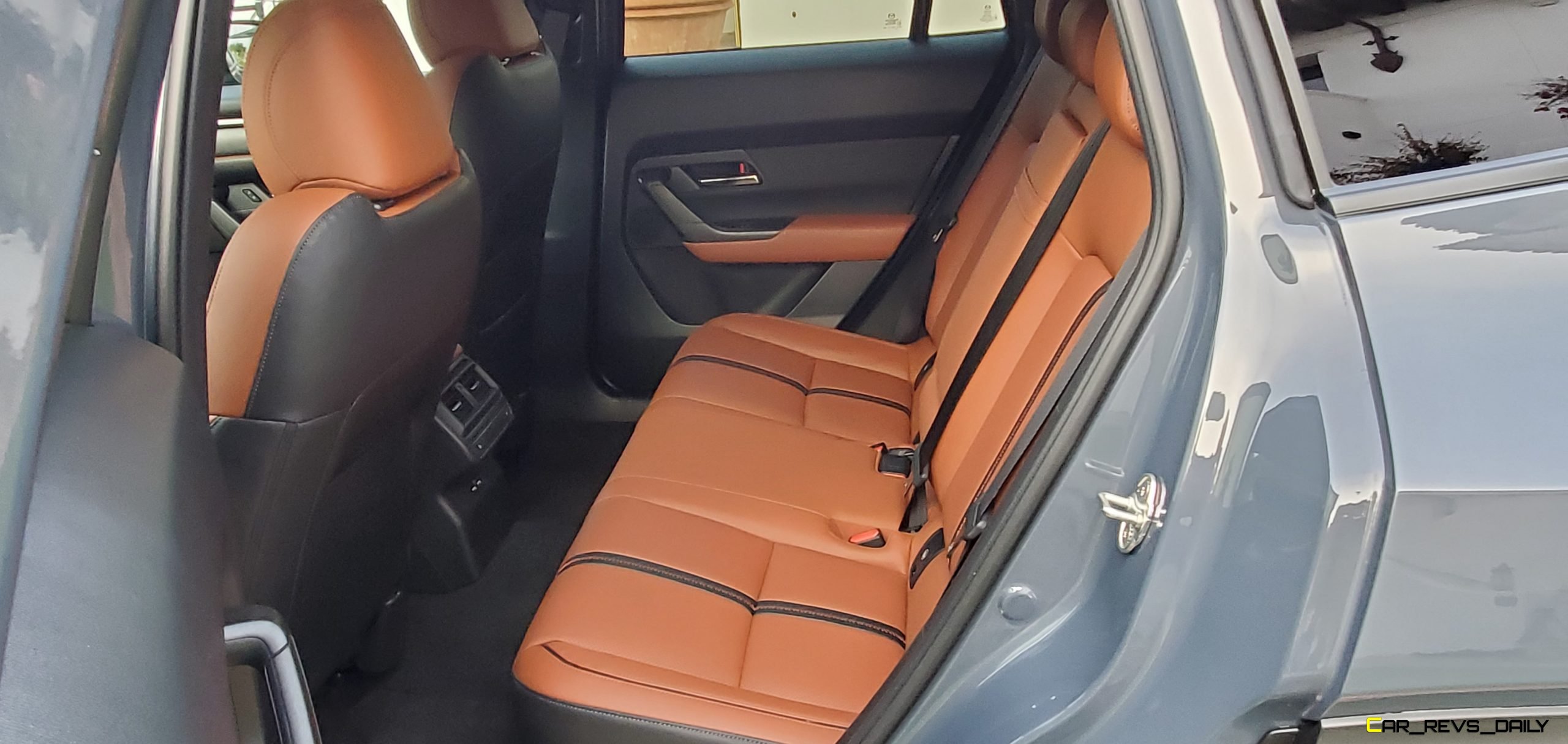
The second-row seats offer good amounts of head and legroom, but buyers can also fold them down to take full advantage of the 75.4 cubic feet of cargo space, with Mazda emphasizing the depth of the space and the low roof height, which allows easy loading of large items. Cloth seating is standard on base S models, but leatherette and full leather seating become standard as you climb up the trim ladder. Turbo owners can also go for an attractive seat color called Terracotta which is the perfect compliment for the fore-mentioned Zircon Sand exterior hue and is an excellent visual change from the flat black leather seats.
Performance That Makes It Feel Smaller Than It Is
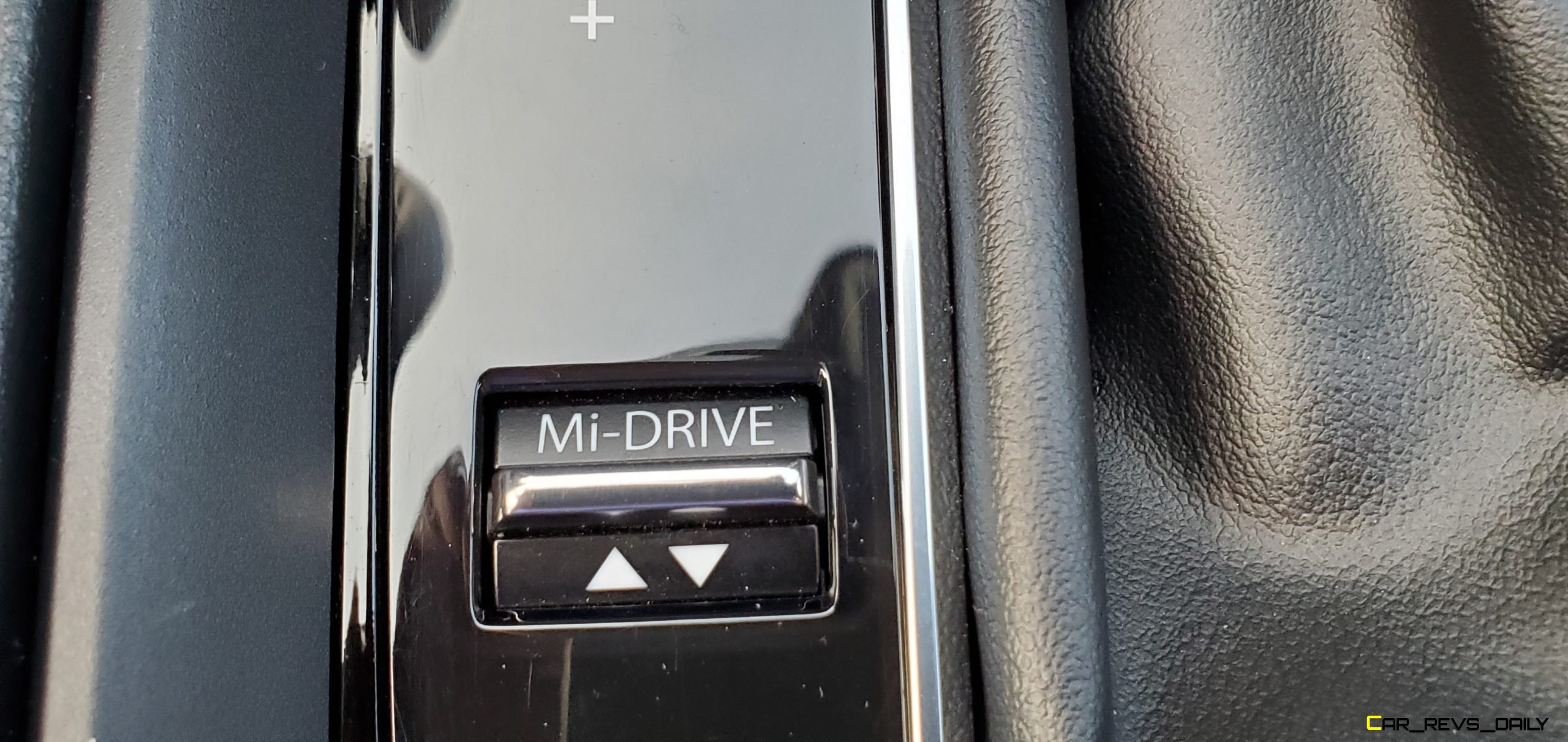
Mazda execs made it clear that they still wanted to give the CX-50 plenty of sportiness when tasked with sporty driving. To help us see this in action, the company chose to put part of its drive route along Tepusquet Road, which snaked its way through the California mountains. This mostly one-lane road is a popular stop for motorcycle and auto enthusiasts, and it’s jam-packed with tight winding corners. While most SUVs would hold their noses in the air at such a sight, the CX-50 bravely rose up to the challenge. When placed in Sport mode (more on that later), the CX-50 felt far smaller than its dimensions would suggest, with the suspension and steering system doing an excellent job of helping us keep a perfect line and pace through the corners.
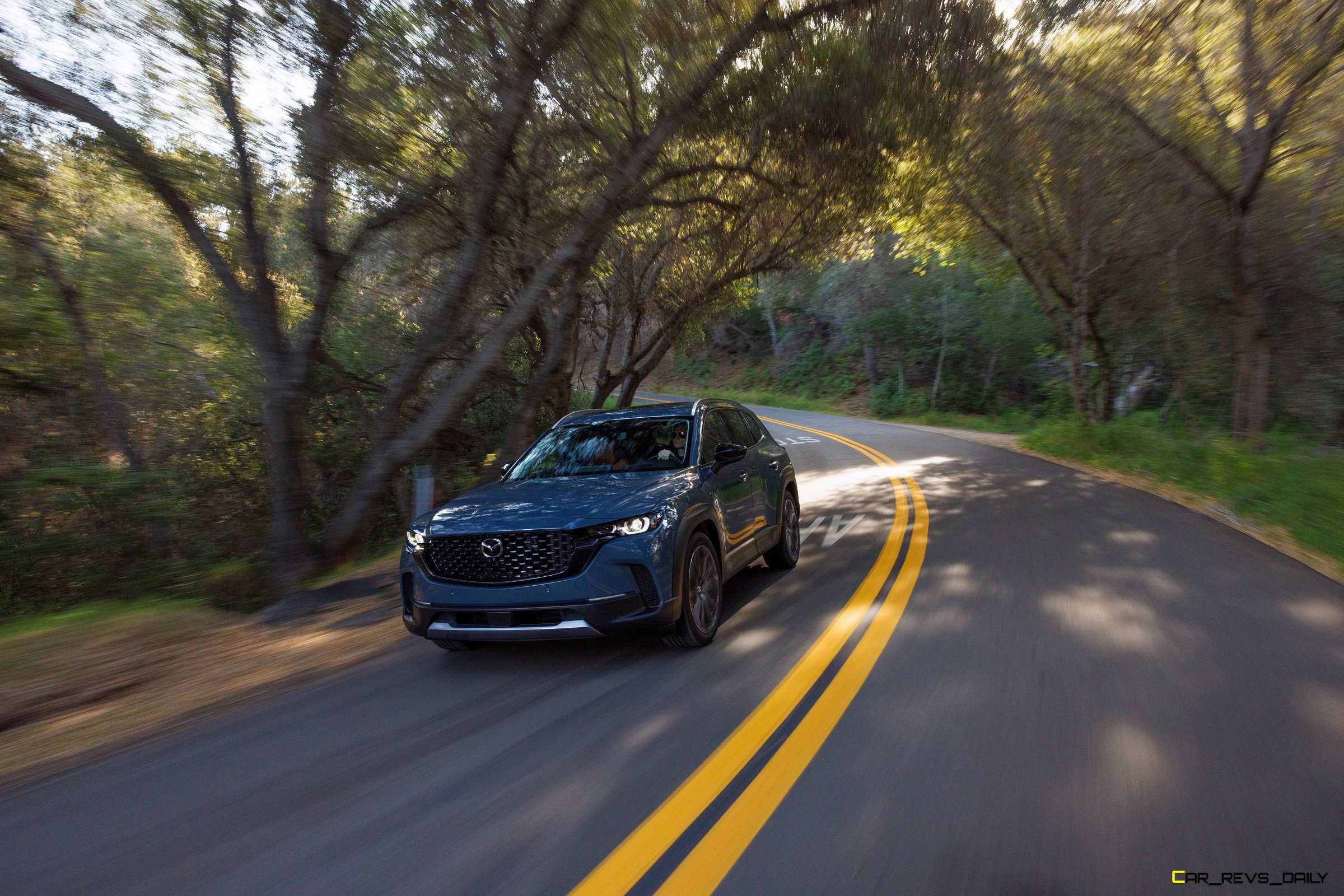
We would typically expect to see this behavior in smaller sports cars. Part of this comes from Mazda’s G-Vectoring system, which automatically makes adjustments to the amount of load on the front wheels and adjusts the torque to help improve the cornering feel. Sport mode also slightly sharpens the steering and throttle, but the transition between it and normal mode is not as jarring as some of its rivals, and the change feels seamless and natural. Tepusquet Road also provided two abrupt tests of the CX-50’s brakes, first when we spotted a pair of turkeys crossing the road and later when a fast-moving mailman forced us into abrupt evasive action. While the brakes delivered a good amount of bite in both of these situations, we wished that the brake pedal itself would have more communication with the driver, and it occasionally felt vague in certain conditions.

Playing the role of supporting actor is the 2.5-liter turbocharged four-cylinder. While lower trims come with a naturally aspirated version of the 2.5 liter that only makes 187 hp, the 256 hp turbocharged four-cylinder is the one to go for if you’re looking for maximum performance but make sure you feed it premium since power drops to 227 hp when it’s fed a steady diet of regular unleaded. Torque also dips by 10 lb-ft to 310 (versus 320 lb-ft with premium) but look for those decreases to only be noticed by more observant owners. In day-to-day driving, the turbo delivered plenty of passing power on the freeway, and it proved to be a commendable companion in city driving. A six-speed automatic is the lone transmission here, and while it does a good job delivering smooth shifts, it’s also a bit of an oddity in a world where many SUVs, regardless of size, are packing eight nine, or even ten-speed transmissions.
Off-Roading And Towing Are A Breeze In CX-50
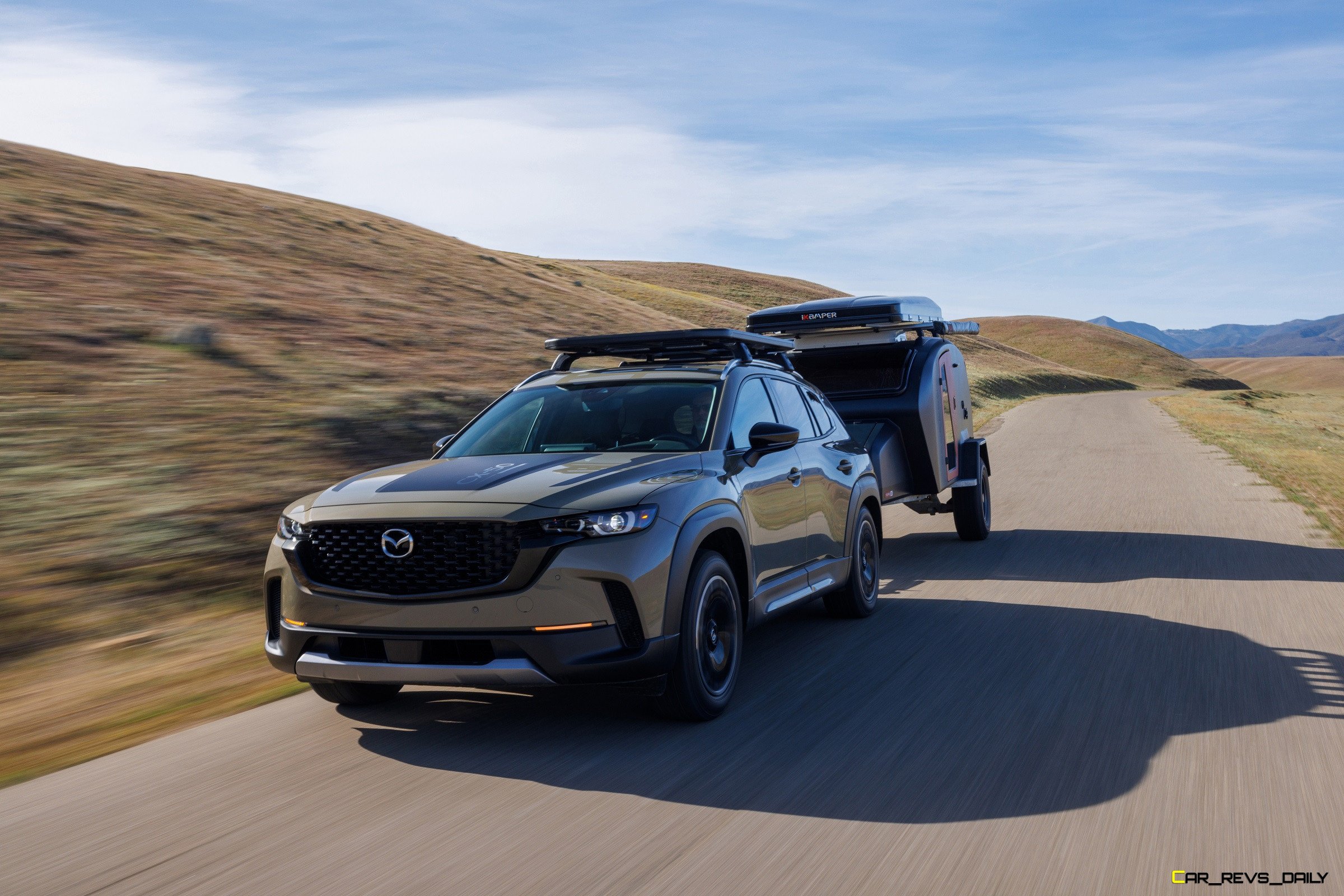
In addition to delivering the beef in traditional driving, we were also given a chance to experience the CX-50’s towing and off-road abilities after some lunch at the Cuyama Buckhorn. The CX-50 comes with Tow mode in its Mi-Drive system, but here it’s a case of tradeoffs, with Tow mode only accessible when the SUV is correctly plugged into a trailer. When that happens, Tow mode appears but benches Sport mode in the process and vice versa when the trailer is removed. With tow mode on, we immediately noticed less sway and more control when lugging our trailer on a quiet stretch of California desert freeway with Mazda reps kindly loading our trailer with 3,500 lbs of cement. This concrete stress test did little to muddle the mood of the 2.5 liter, and it managed to do a commendable job hauling this large load without fuss.
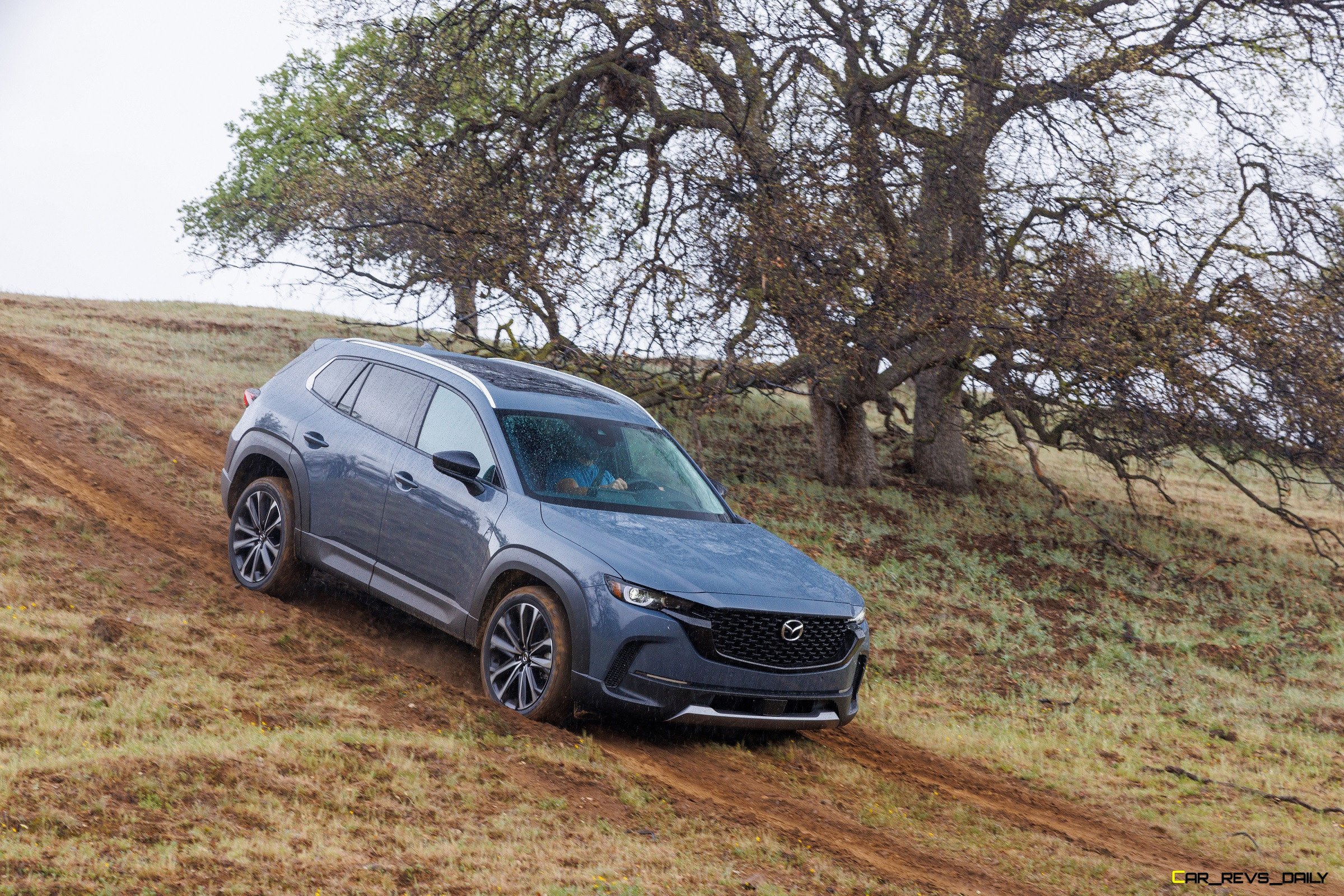
The CX-50 can also go off the beaten path when needed, thanks to a separate off-road mode. While it’s a far cry from beefier offerings like the Jeep Wrangler, our tester was still a commendable steed on the off-road course that Mazda had laid out in some of the canyons that dotted the New Cuyama area. Steep hill climbs and rutted trails dotted our route. However, the CX-50 surprised us with its tenacity and its ability to still provide reasonable amounts of comfort even when articulating through trickier sections of terrain.
The missing key feature is Hill Descent Control, with Mazda claiming that the feature would have produced unnatural inputs and that the brake pedal will do the job just fine. We’re not buying it, and here’s hoping that Mazda will eventually change its tune on that soon.
Value Quotient:

Pricing for the 2023 Mazda CX-50 reflects the kind of buyers that Mazda is looking to reach with a base naturally aspirated equipped S model starting at $26,800. Mazda is splitting the family into two sections, with prices in the category above gradually climbing until you get to the Premium Plus model, which has a starting sticker of $36,400. Budget-conscious shoppers should check out the $29,500 Preferred and $32,550Preferred Plus models since they offer the best mixture of equipment and value in the non-turbo CX-50 lineup.

Speaking of the Turbo models, they start at $36,400, with the Premium and Premium Plus models starting at $39,559 and $41,500, respectively. The lone exception is the Meridian Edition, with Mazda preferring to keep pricing for that model under wraps for the time being. That will change later this year, but look for Meridian Editions to potentially cross over the $45,000 barrier when fully equipped. As for the rest of the lineup, some of the higher pricing in select trims pushes the Mazda past similarly equipped Subaru Outback models and even into territory occupied by three-row SUV entries like the Ford Explorer.
On the flip side, though, there’s also value to be found when you only focus on select trims and also make wise use of the accessories and options list. Mazda is offering an impressive array of accessories for the CX-50, and they even include a nifty roof storage system and a three-person roof-mounted tent. It will be interesting to see how the CX-50 and the smaller CX-5 fare when it comes to internal competition and whether both will cannibalize sales from each other.
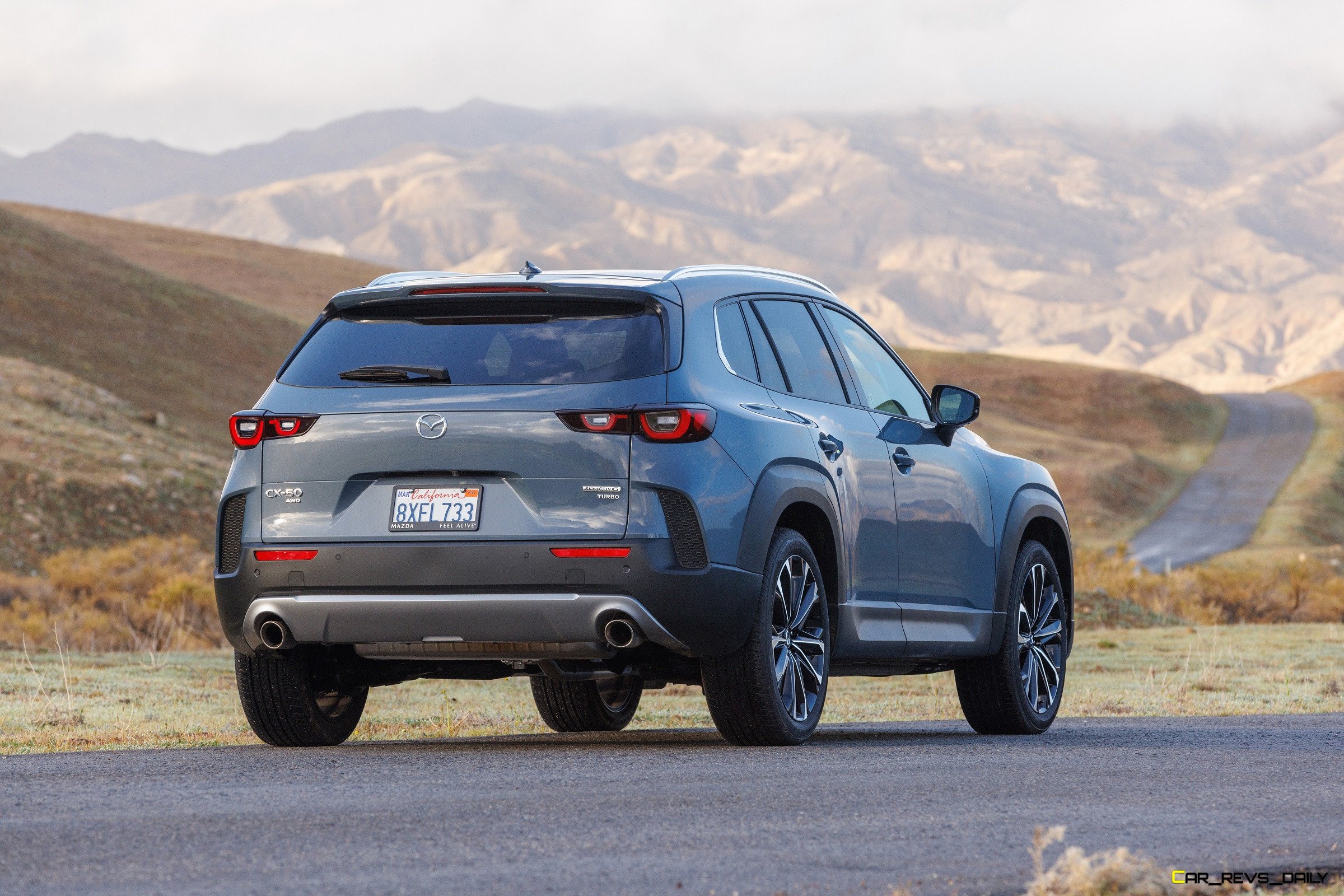
The 2023 Mazda CX-50 shows that Mazda is willing to explore new boundaries while also pushing the envelope in regards to how it fills niche gaps between existing models. That includes green motoring with the company embarking on a rapid PHEV deployment strategy that will introduce PHEV versions of the MX-30 and the upcoming CX-90 and incorporate the technology into other models. The CX-50 is one of the models on the list to receive PHEV technology, but we’ll have to wait a while to see it in the flesh. In the meantime, look for the 2023 CX-50 to be a decent alternative to traditional SUVs, especially when you factor in its unique blend of on and off-road performance.

Carl Malek has been an automotive journalist for over 10 years. First starting out as a freelance photographer before making the transition to writing during college, his work has appeared on numerous automotive forums as well as websites such as Autoshopper.com.
Carl is also a big fan of British vehicles with the bulk of his devotion going to the Morgan Motor Company as well as offerings from Lotus, MG, and Caterham. When he is not writing about automobiles, Carl enjoys spending time with his family and friends in the Metro Detroit area, as well as spending time with his adorable pets.

